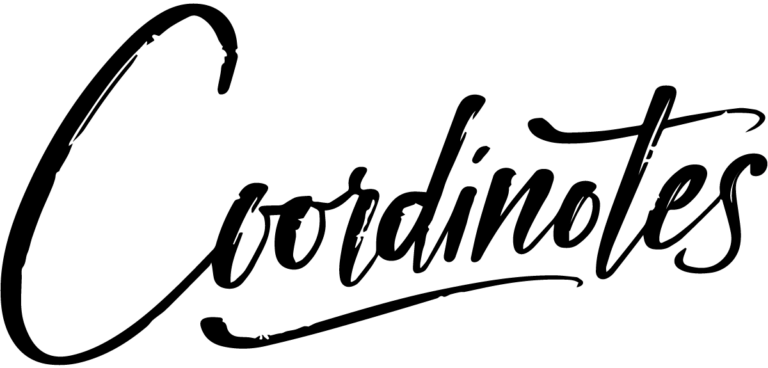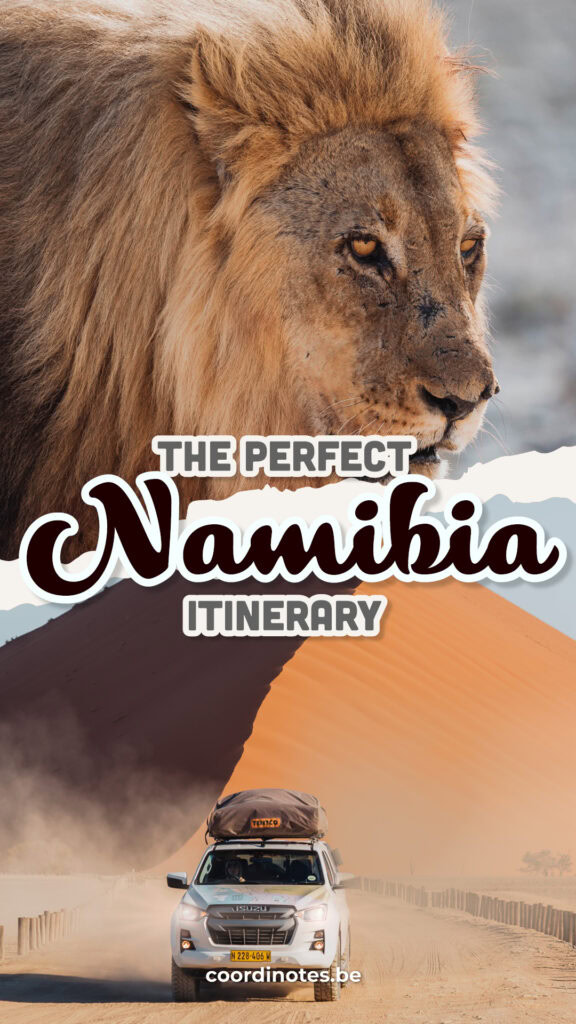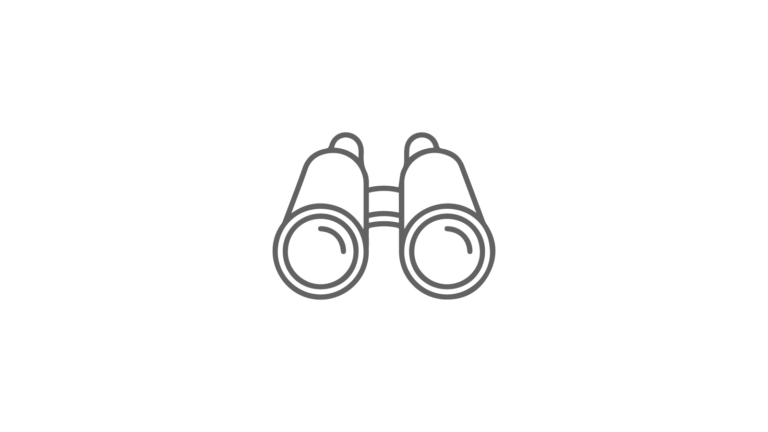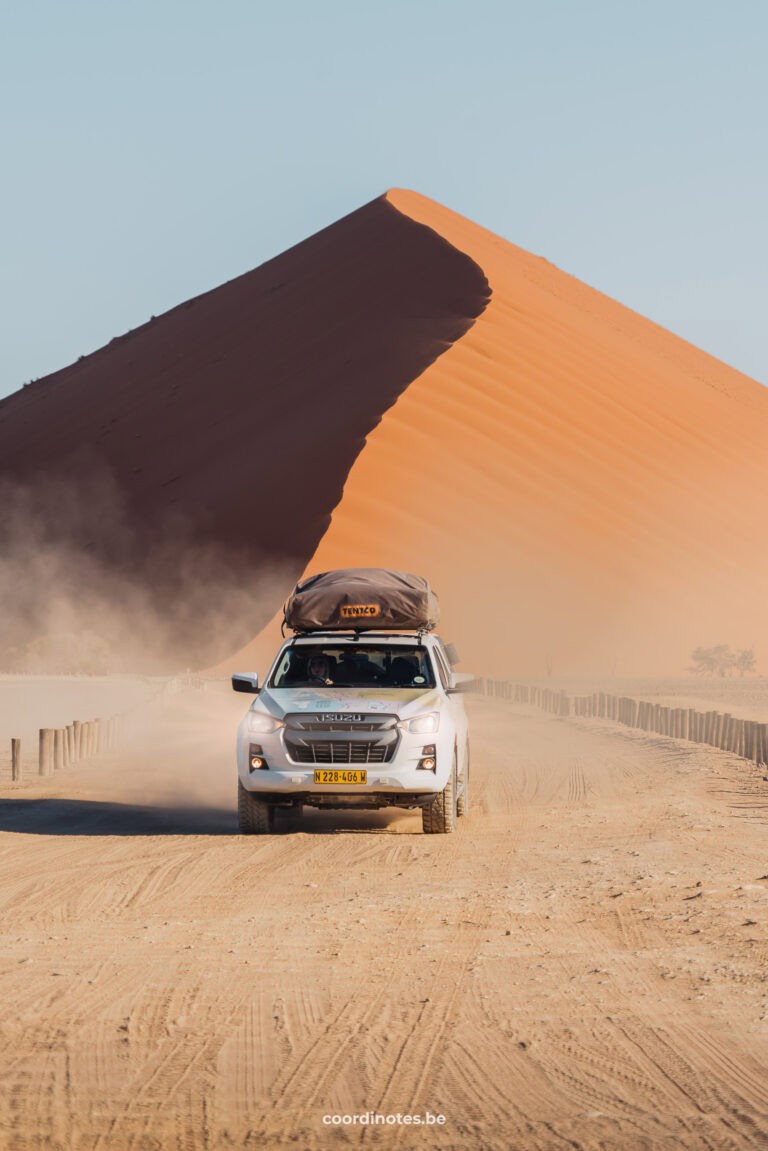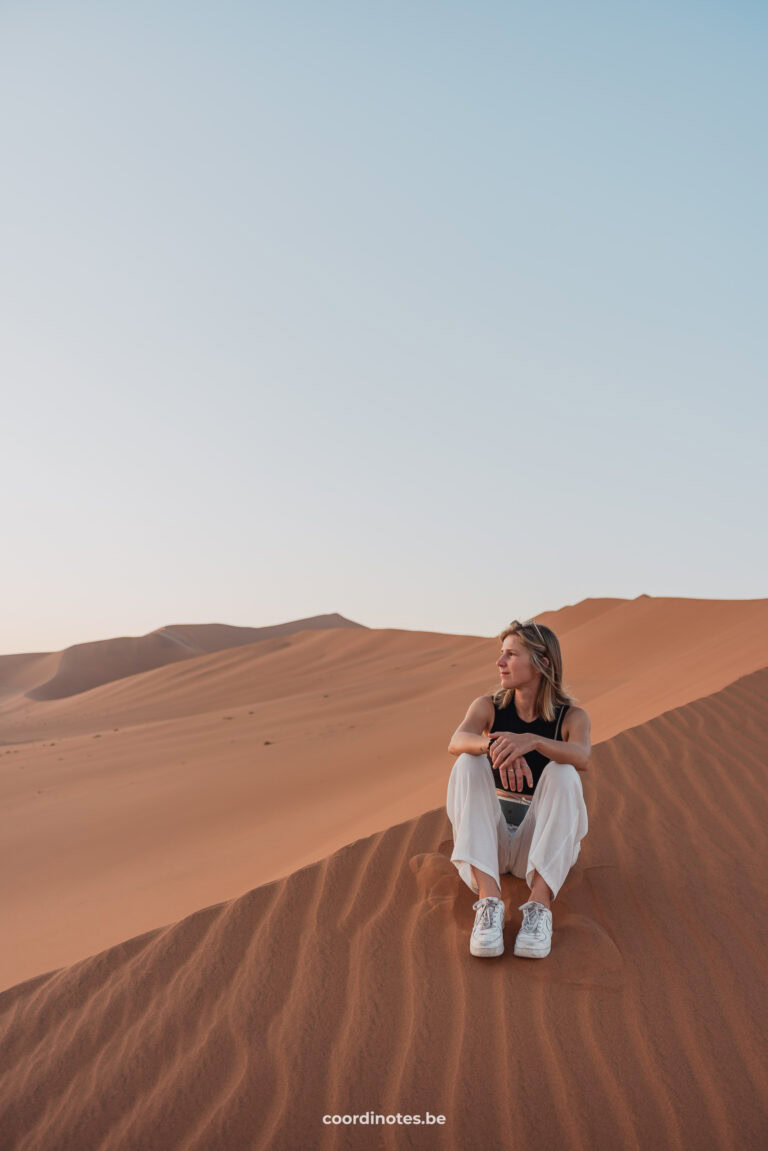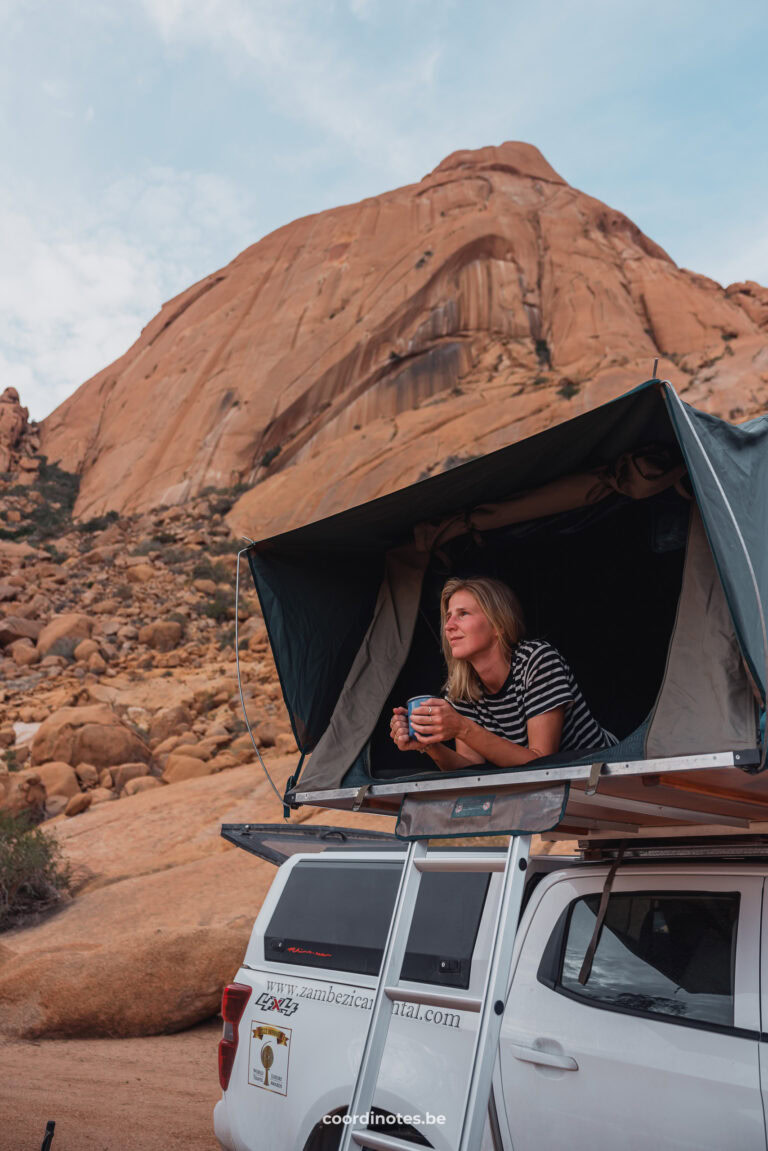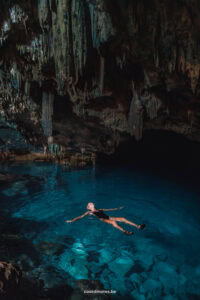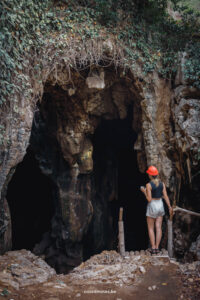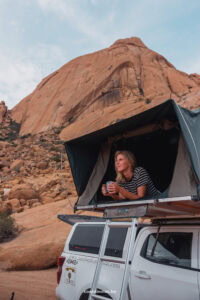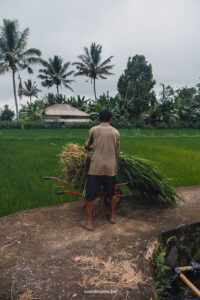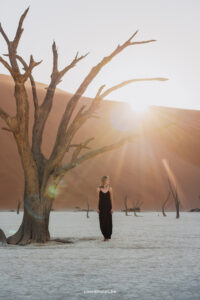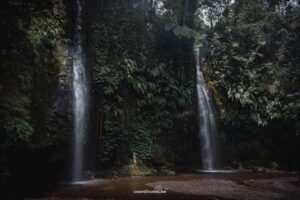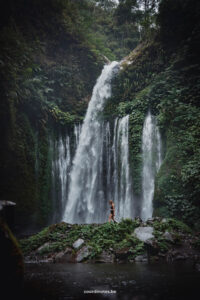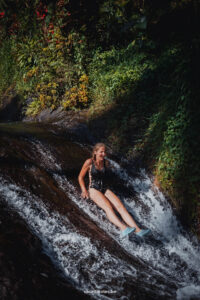Overview
This post may contain affiliate links, which means we may receive a small commission, at no extra cost to you, if you make a purchase through our link.
This is a free way to support us and allows us to continue creating even more inspiring travel guides. Thank you for supporting the love we put into Coordinotes!
Flight deals
Fly to your destination at the best prices! Our partners offer many airlines on their platform so you can compare what is the best option for you.
General Information
After we fell in love with South Africa, it didn’t take long before we decided we wanted to go back to Africa. For our second trip, our attention quickly fell on Namibia, because of the combination of its fascinating wildlife and scenic landscapes. And we are so happy that we chose this country. It certainly didn’t disappoint. On the contrary, our love for Africa has only grown.
Namibia has an area of 824,292 km², and after Mongolia, it is the second least densely populated country in the world. So, when we say that you can drive for hours without seeing a single person, you can take this literally! Namibia got its name from the Namib desert, that stretches along the coast of the Atlantic Ocean. Besides its most famous sights, you will also be showered with culture, unique experiences and wide landscapes. As you drive across the country, you will be amazed by how the scenery changes literally every hour.
This travel route for Namibia takes you along the most stunning and interesting places of the country. From unique wildlife to the most jaw-dropping landscapes, you will see it all during this Namibia road trip!

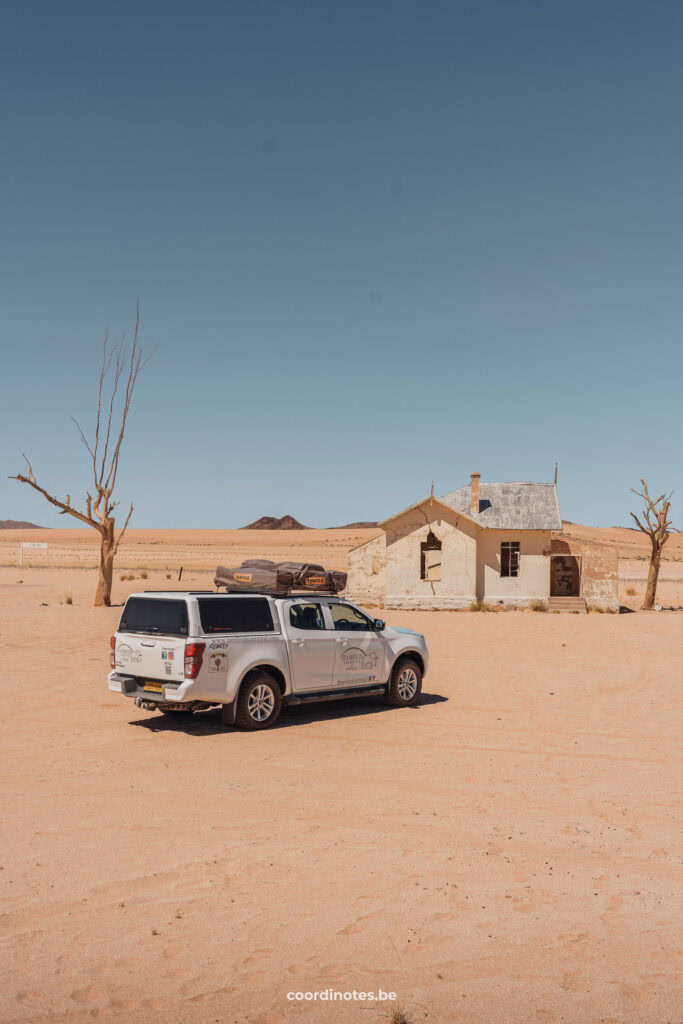
About the itinerary
We have covered this route in 16 days, but it is definitely possible to do this route in just 2 weeks. If you have more time, you can certainly fill 3 complete weeks and travel on an even more relaxed pace. We have added our tips for completing this trip in both 2 or 3 weeks.
It is a rough route with mainly the highlights, so there’s plenty of room to add or replace things yourself according to your own preferences. We have written down this route clockwise, from south to north, but you can just as well plan this itinerary in the other direction.
So, in which direction should you do the route? This depends on what you want to begin or end with. The south and east of the country are best known for their scenic landscapes, while in the north of the country, you will find more wildlife and safari opportunities. We chose to start with the scenic landscapes and end with safaris, so we could spend our spare days spotting wildlife!
Feel free to contact us with your questions about the various options and we will do our utmost to help you further.
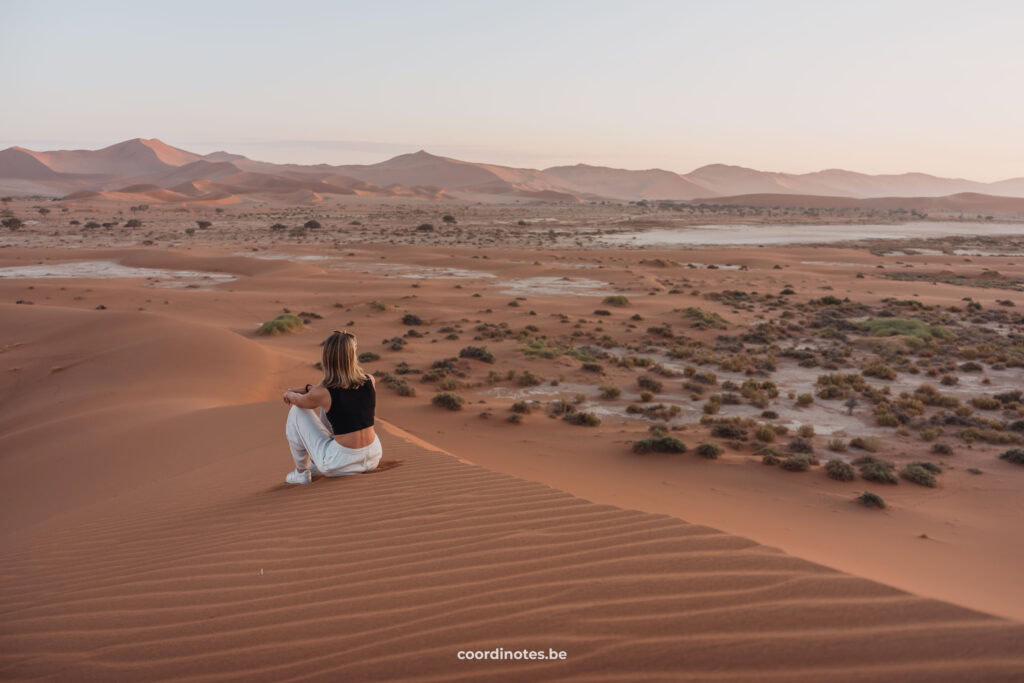
The best time for visiting Namibia
You can drive this route year round, but each season has its advantages and disadvantages. So, it mainly depends on your personal preferences what the ideal time is for this Namibia road trip.
It’s important to note that Namibia is located in the Southern Hemisphere, so the seasons are opposite to those in the Northern Hemisphere.
The overall best time to visit Namibia, is from May to October. During these winter months, you can expect more pleasant temperatures and less rain, as this period is dry season. It is also the best time for spotting wildlife, because there’s less vegetation, resulting in better visibility. Keep in mind that June/July to October/November are peak tourist season. During these months, you can expect more crowds and higher prices. Therefore, the shoulder season, April and May, are the absolute best months to travel to Namibia, with fewer tourists, pleasant weather and lower prices.
November to March are Namibia’s summer and rainy season. During these months, it is much warmer and you can expect big thunder storms.
Renting a car in Namibia
We highly recommend renting a 4×4 car for this itinerary. And even better is renting one with a roof top tent. Why? Because Namibia is home to some very beautiful and unique camp sites. Another reason is that there is not a huge variety of accommodations and they can be quite expensive.
When searching for the best rental car, you might get overwhelmed by the number of rental car companies in Namibia. We can highly recommend Zambezi Car Rental. They not only rent out a car, but offer a full service. We were provided with all the equipment we needed along the way and much more. Communication with them went very smoothly and they ensured that we lacked nothing during our trip. Also our roof top tent was super comfortable and set up in just a few minutes. We couldn’t have asked for a better rental car for this trip!
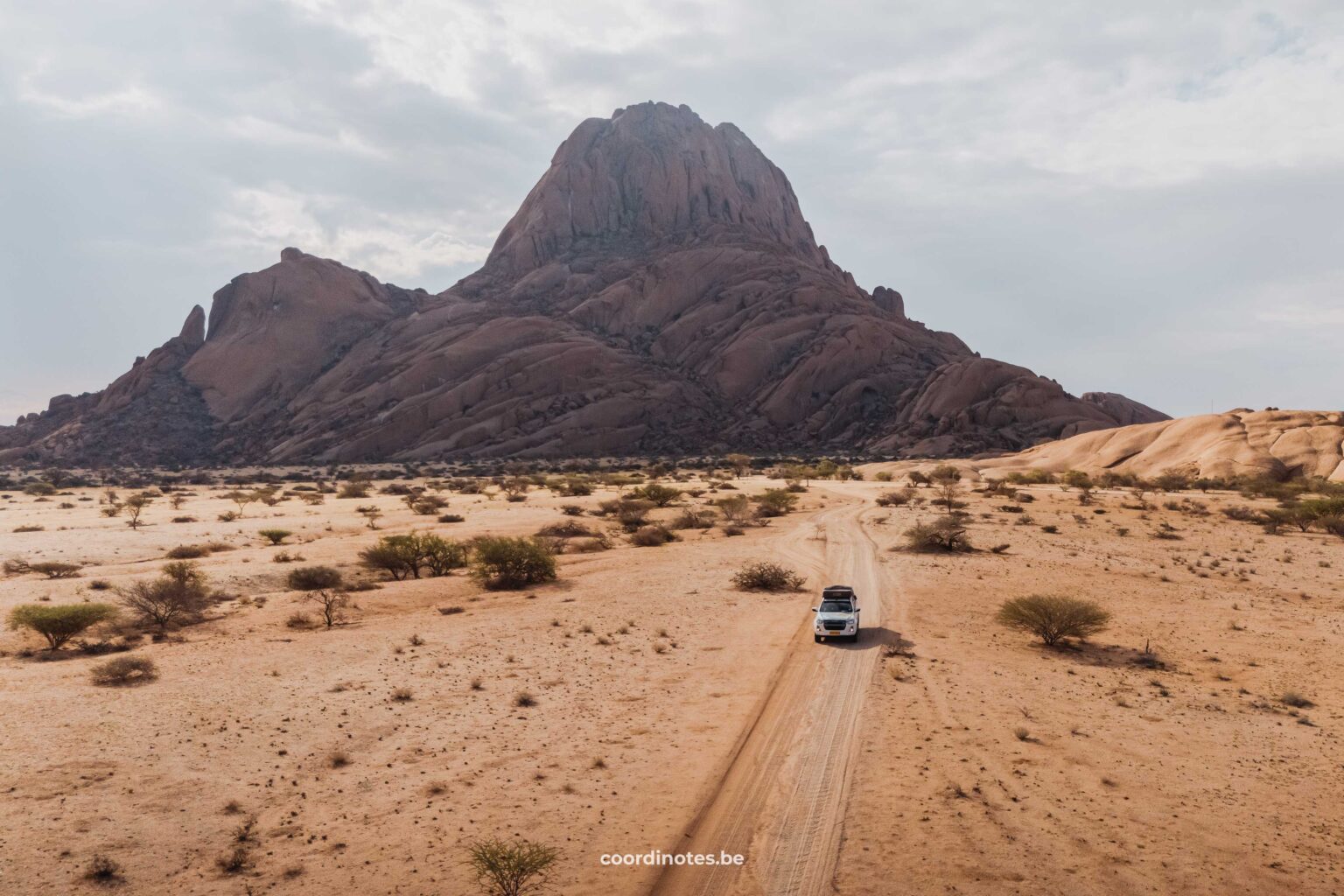
Driving in Namibia
Driving in Namibia is very safe, as you will hardly pass any other car. It is important to note that in Namibia, they drive on the LEFT side of the road. We got quickly used to it and we really enjoyed driving the ever changing roads. Because the country is so big, some places are quite far apart. So, you may sometimes have to cover quite some distance in one day, but due to the beautiful and unique landscapes, this is not as bad as it sounds.
Namibia has 64.799 km of road, of which only 7841km are paved. That’s why we advise to rent a 4×4 vehicle. Most of these roads are well maintained, but note that there are often flooding areas and occasional bumps and holes. The speedlimit on gravel roads is 100km/hr, but we highly recommend that you stick to a speed limit of 60-80km/hr, because of the unpredictable wildlife and occasional bad parts of the roads. In national parks and on public roads within an urban area, speedlimit is 60 km/hr and 120 km/hr on paved freeways.
You hardly come across anyone along the way, but that doesn’t mean you should pay less attention to the road. Always adhere to the traffic rules and look carefully when turning onto the road. 80-100km/hr is not slow and vehicles sometimes approach faster than you think.
Tip: Because most of the roads in Namibia are mainly gravel, it is a little more likely that you will have a flat tire. Fortunately, Zambezi Car Rental provides you with 2 spare wheels and all the necessary tools. Make sure you know in advance how to replace a tire.
Windhoek
When you arrive in Namibia by air, your trip will most likely start in the capital Windhoek. You can pick up your rental car here, withdraw or exchange money, buy a SIM card (if you have not already done so at the airport) and recover from your trip. This is also the time when you can fill up your gas tank and stock up at the supermarket. You won’t find many supermarkets in Namibia, so make sure you stock up on food for enough days. Apart from this, there is not much to do in Windhoek. You can visit the gingerbread Christuskirche, or you can save this for when you are back in Windhoek on your last day.
When we arrived in Windhoek, we decided to stay our first night in the city, so that we could start our road trip bright and early the next morning.

Recommended campsites around Windhoek:
Urban Camp (280 NAD pp/night). If you can only pick up your rental car a day later, you can still stay in one of Urban Camp’s beautiful tents.
Arebbusch Travel Lodge Campsite (Low season: 275 pp/night) is a great alternative, when Urban Camp is fully booked.
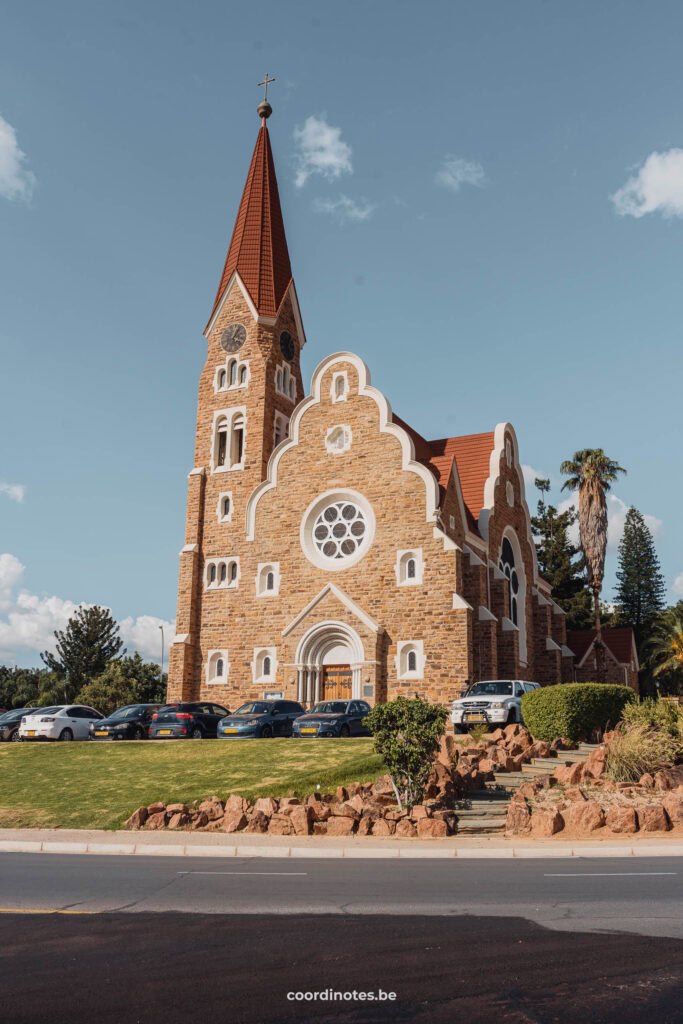
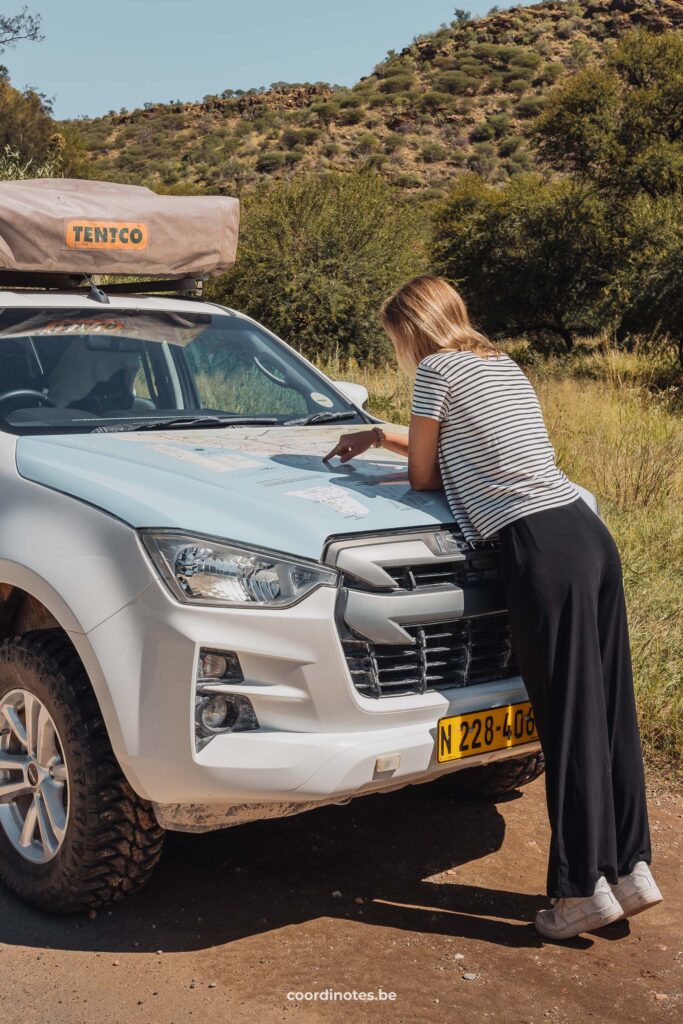
Advertising
2 – 3 week alternative: The first part of the route depends on wether you have 2 or 3 weeks.
If you only have 2 weeks, you can decide to skip Lüderitz and Kolmanskop, as it is quite some extra distance, and drive straight from Windhoek to Sossusvlei.
If you have 3 weeks, you can also add the famous Fish River Canyon to your itinerary, between Windhoek and Kolmanskop. We haven’t been there, but we heard it is definitely worth a visit!
Lüderitz - Kolmanskop
The distance between Windhoek and Lüderitz is quite big. You should therefore definitely allow an extra day to drive. However, you drive through such unique landscapes that it is not a ‘lost’ day in the car, but also a truly unique day during your road trip through Namibia. Lüderitz is the closest village to the beautiful Kolmanskop and the perfect place as a base to visit this unique ghost town.
Kolmanskop is one of the most unique places in Namibia. It is a ghost town that has been completely taken over by the sands of the desert. The abandoned houses all tell the story of this once prosperous mining village, which was left behind as soon as the diamond resource ran out. Now, it is a real paradise for photographers. We highly recommend that you go early in the morning for the best light and the fewest people.
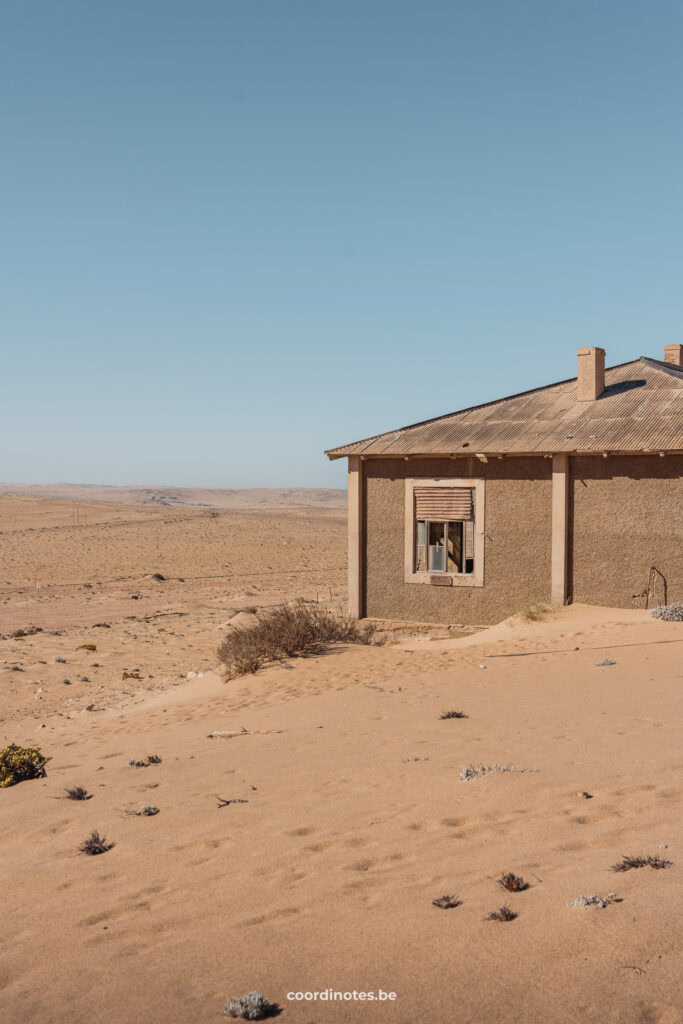
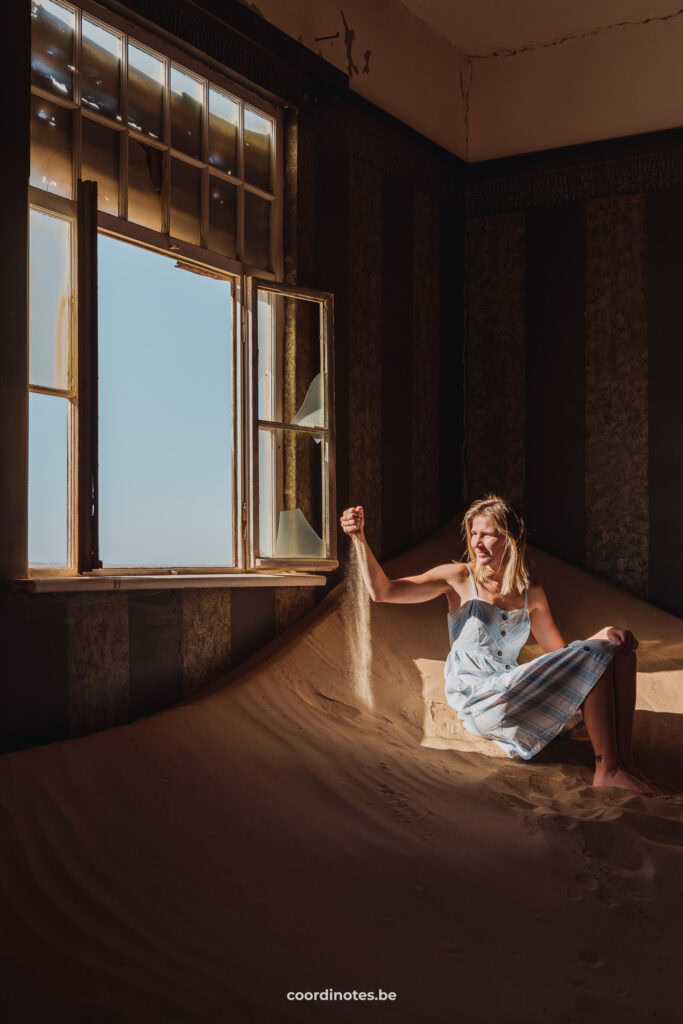
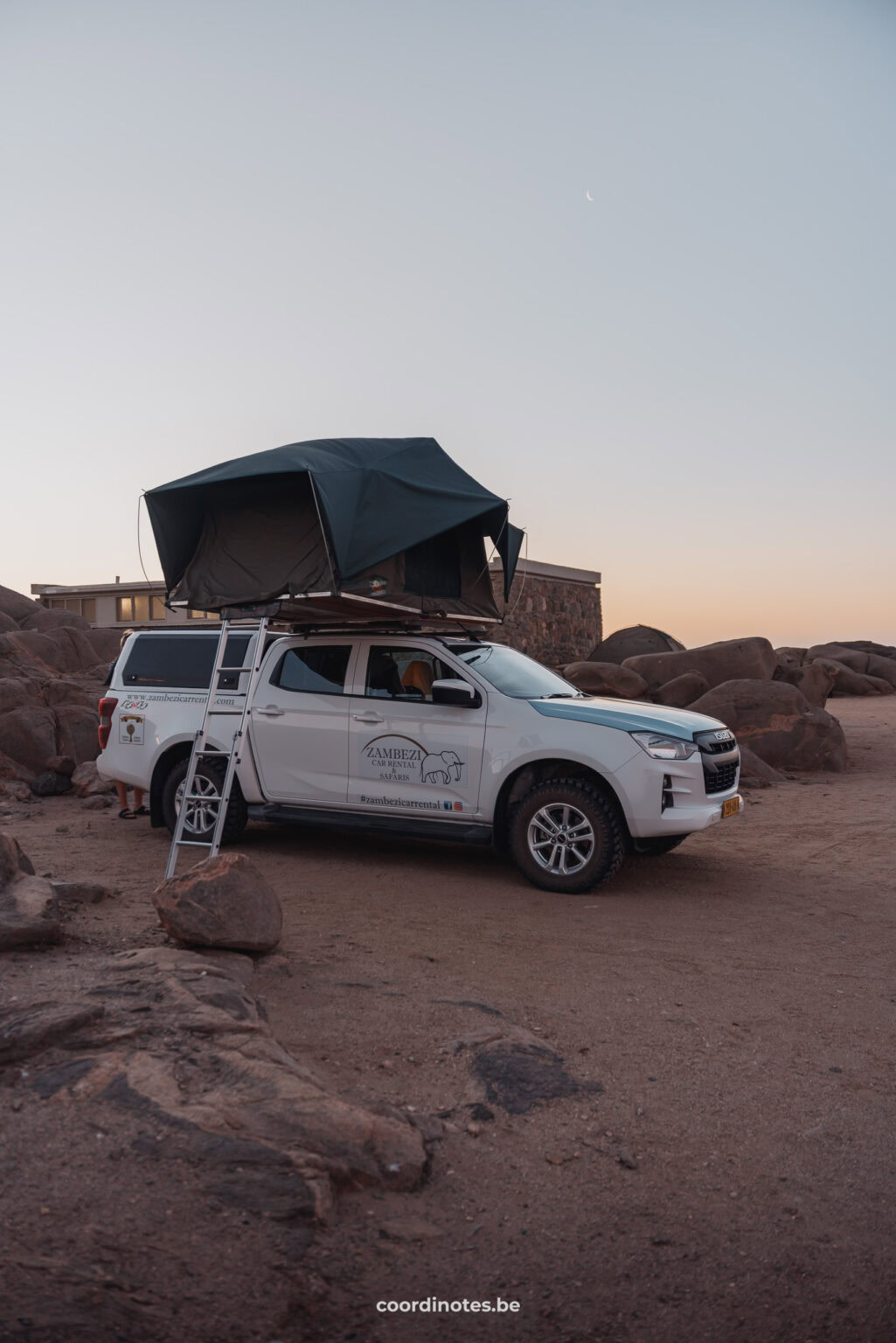
Recommended campsite in Lüderitz:
Shark Island (300 NAD pp/night)
If you don’t make it to Lüderitz in one day, you will pass multiple campsites on the way, including the beautiful Camping Klein Aus Vista.
Sesriem - Sossusvlei
Ah Sossuslvei, our favorite place in Namibia together with Etosha National Park. This incredible sand dune valley is located in Naukluft National Park. The highlights of Sossusvlei are the Big Daddy Dune, Deadvlei and Dune 45. You can climb to the top of one of these dunes for sunrise or sunset and make the most apocalyptic pictures between the dead trees of Deadvlei. When you leave, don’t forget to have a look at the beautiful Sesriem Canyon, just before the exit of the national park.
The best base to explore and the closest village to Sossusvlei is Sesriem. Some of the lodges and campsites here are located within the boundaries of the park, so you can drive to the dunes an hour earlier than people staying outside the park.
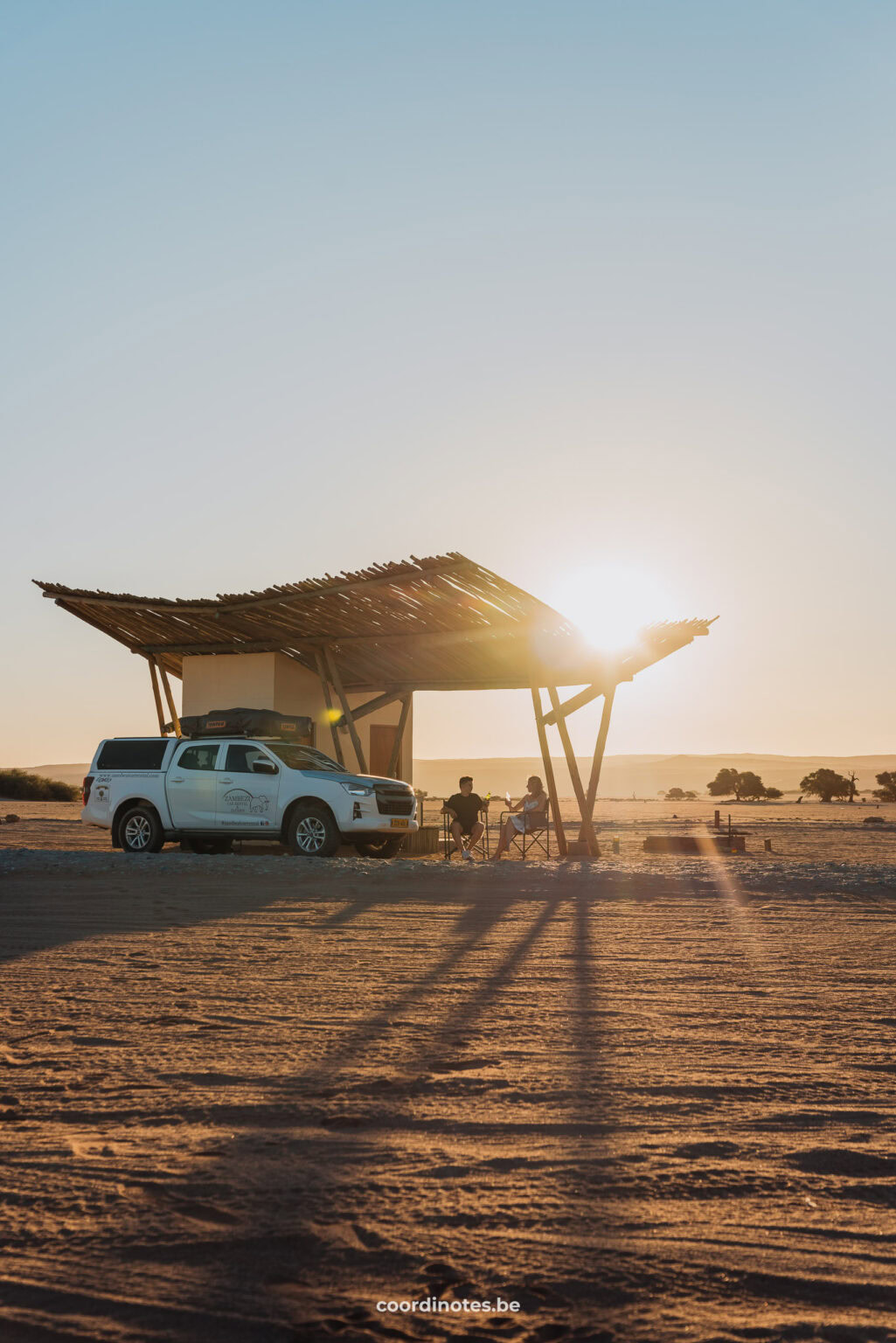
Recommended campsites in Sesriem:
Sesriem Oshana Campsite (Low season: 400 NAD pp/night + National Park fees) or Sesriem campsite.
If you have the budget, the Dead Valley Lodge looked like the perfect lodge for spending your time in Sossusvlei when it is too hot to explore!
Sossus Oasis Campsite is a nice campsite right outside the gates of the National Park.
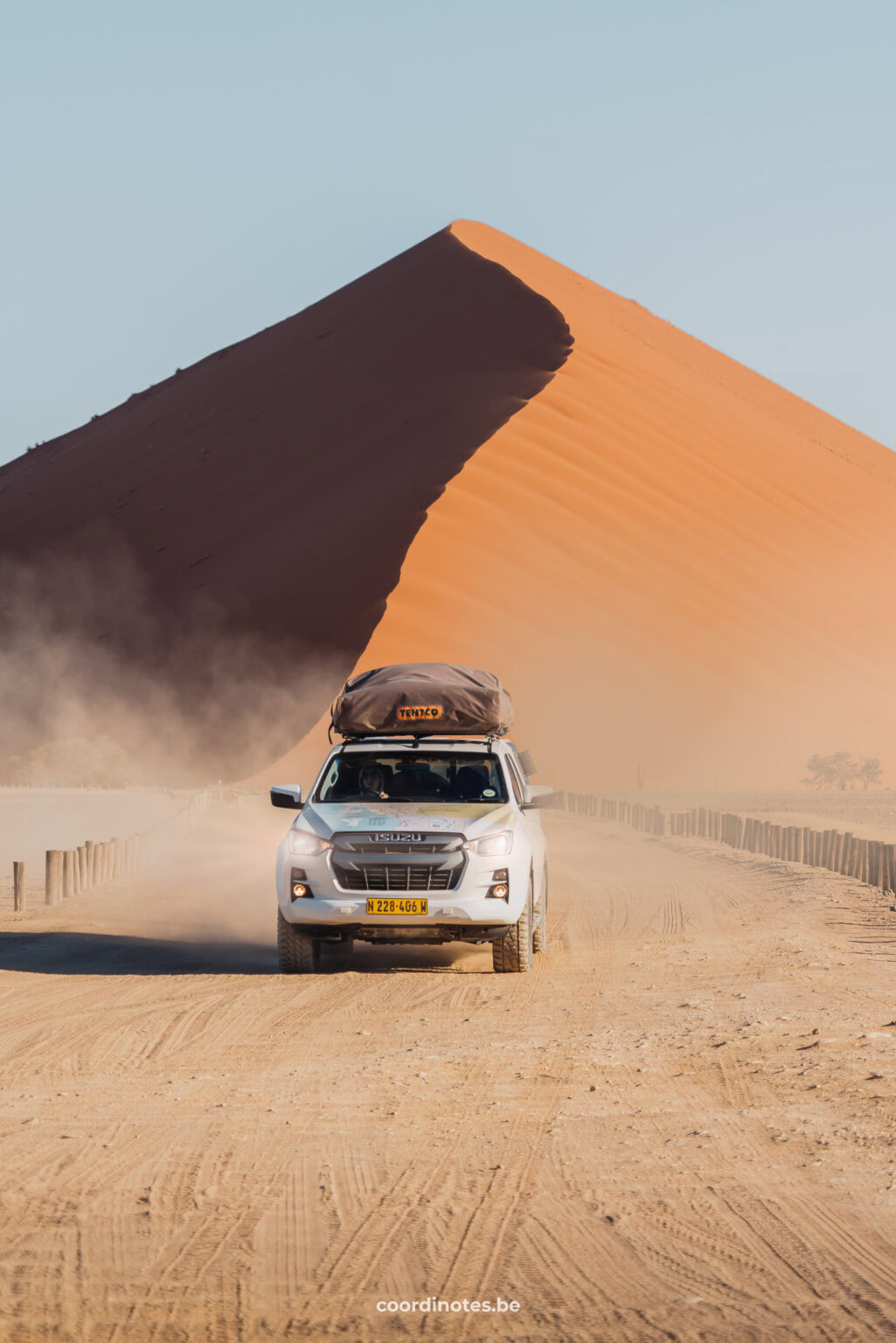
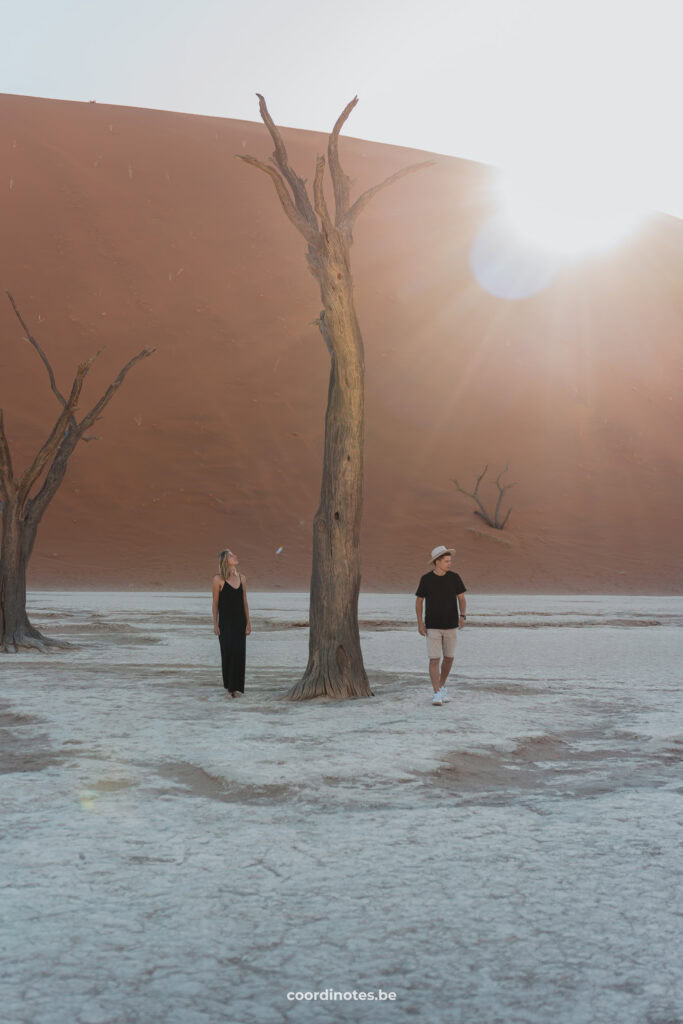
Flight deals
Fly to your destination at the best prices! Our partners offer many airlines on their platform so you can compare what is the best option for you.
Swakopmund
When you drive from Sossusvlei to Swakopmund, you can refuel both your car and yourself in the small, cozy Solitaire along the way. Here, you will find a bakery where you can enjoy a coffee and a cake in a lovely setting.
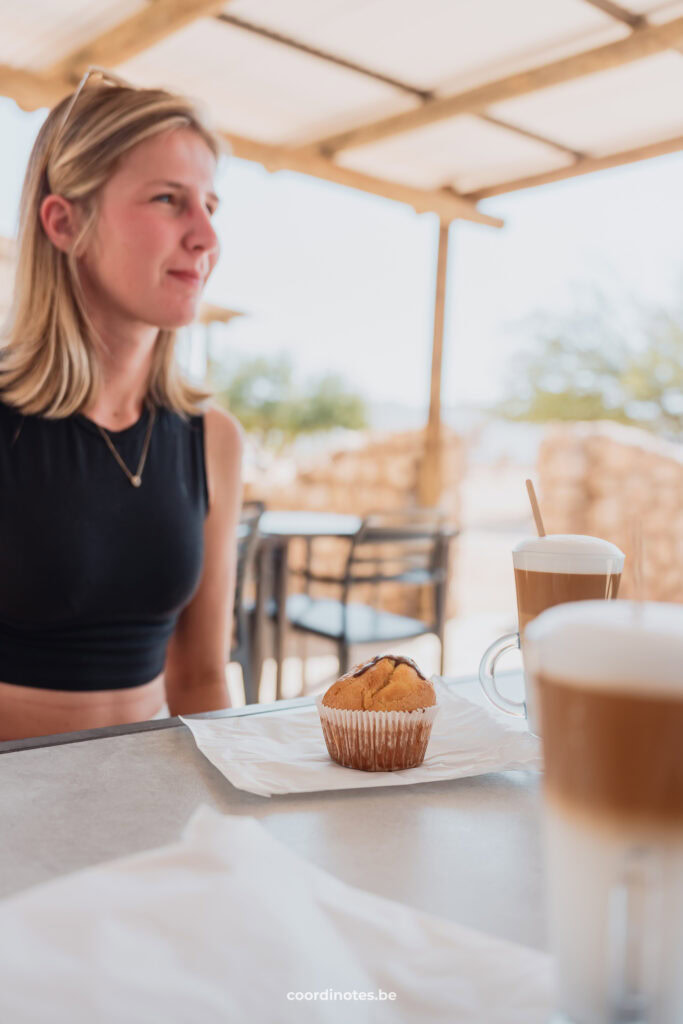
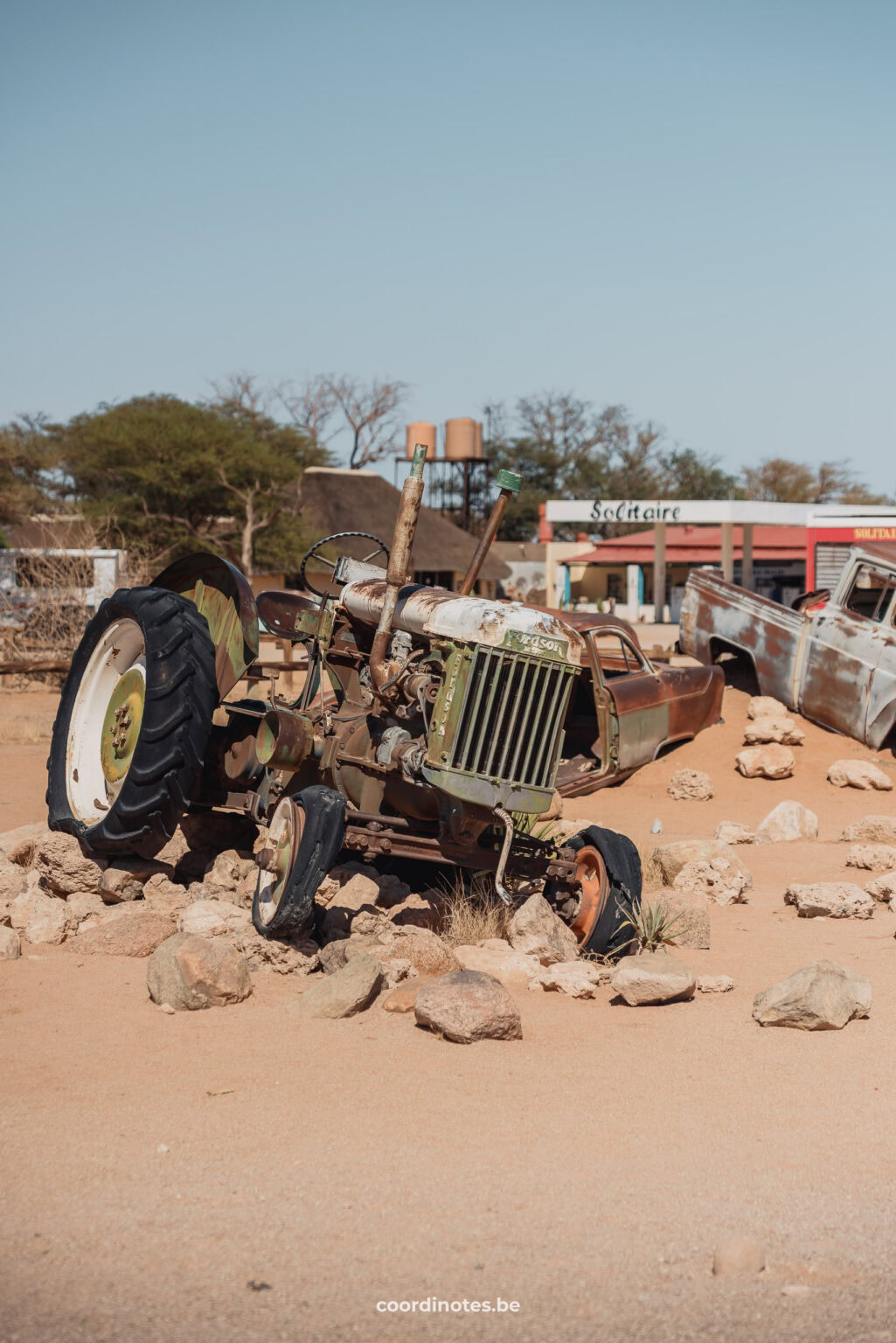
Swakopmund is a lovely coastal town, where you’ll see a lot of German influences in the architecture. Not only is it a pleasant city, there are also several interesting and adventurous things to do. You can visit Walvis Bay, where everything is about pink: pink lakes, countless pink flamingos… From here, you can also take a tour to the famous and unique Sandwich harbour, where the sand dunes meet the sea.
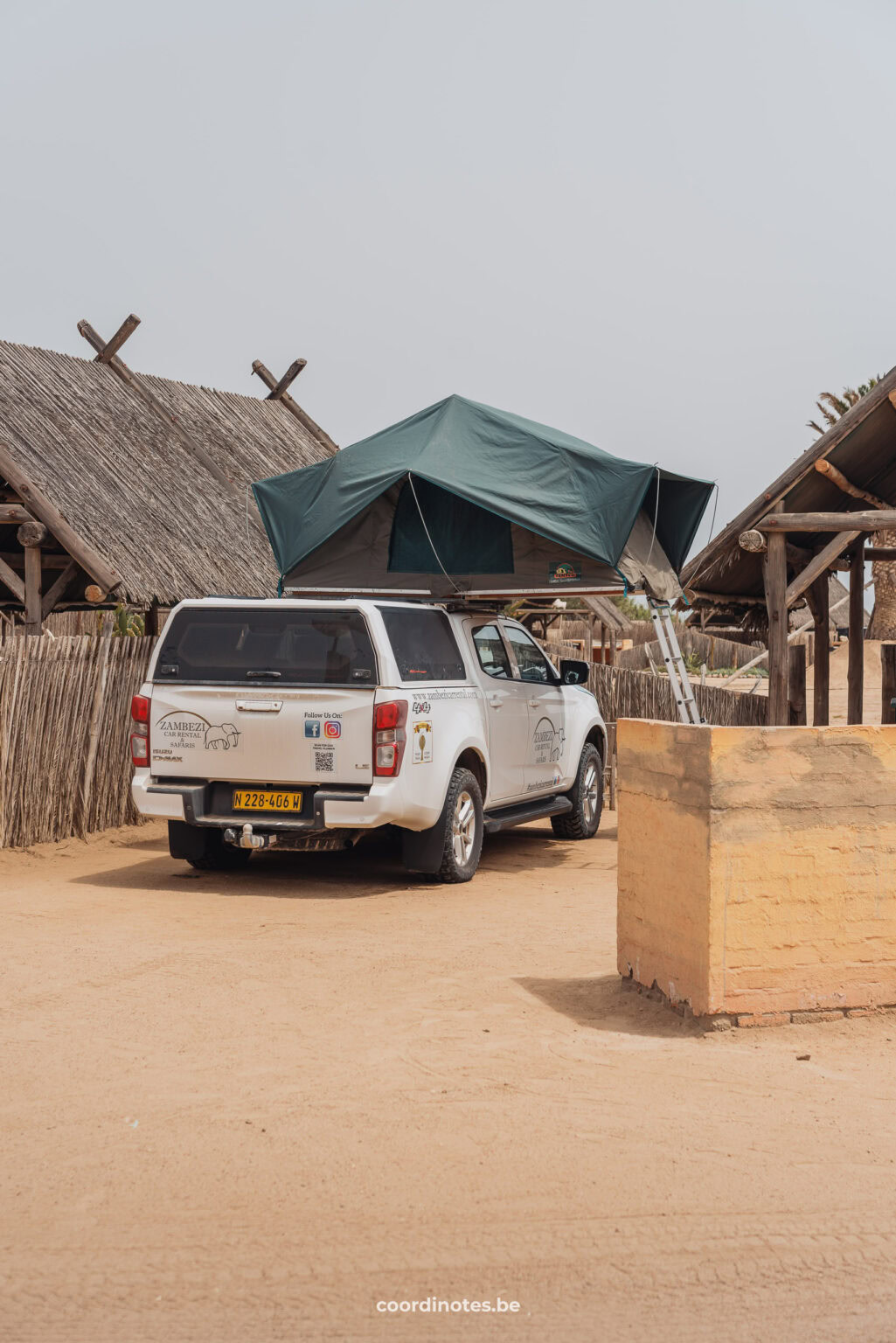
Recommended campsite:
Tiger Reef Campsite (Low season: 195 NAD pp/night + 100 NAD per vehicle)
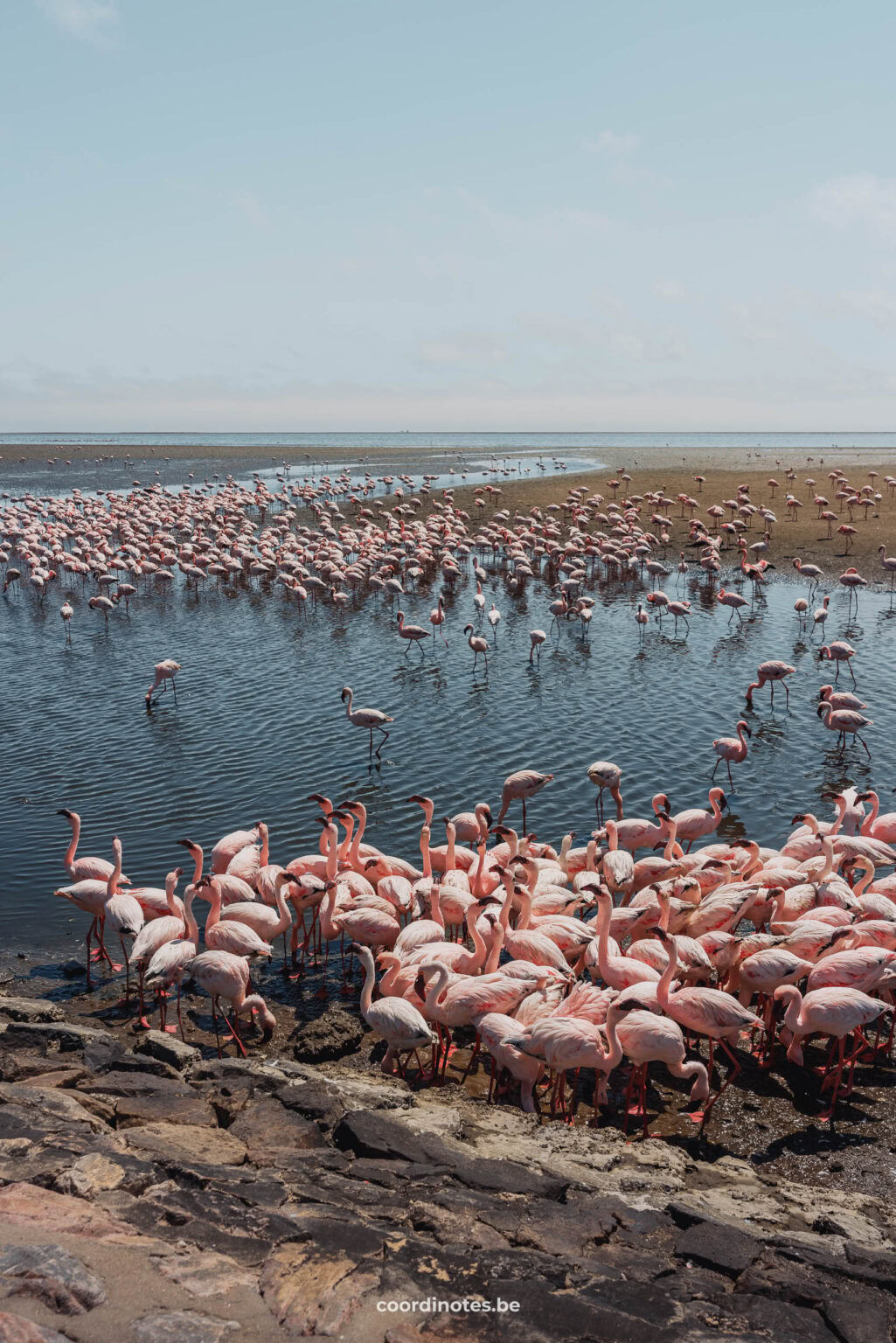
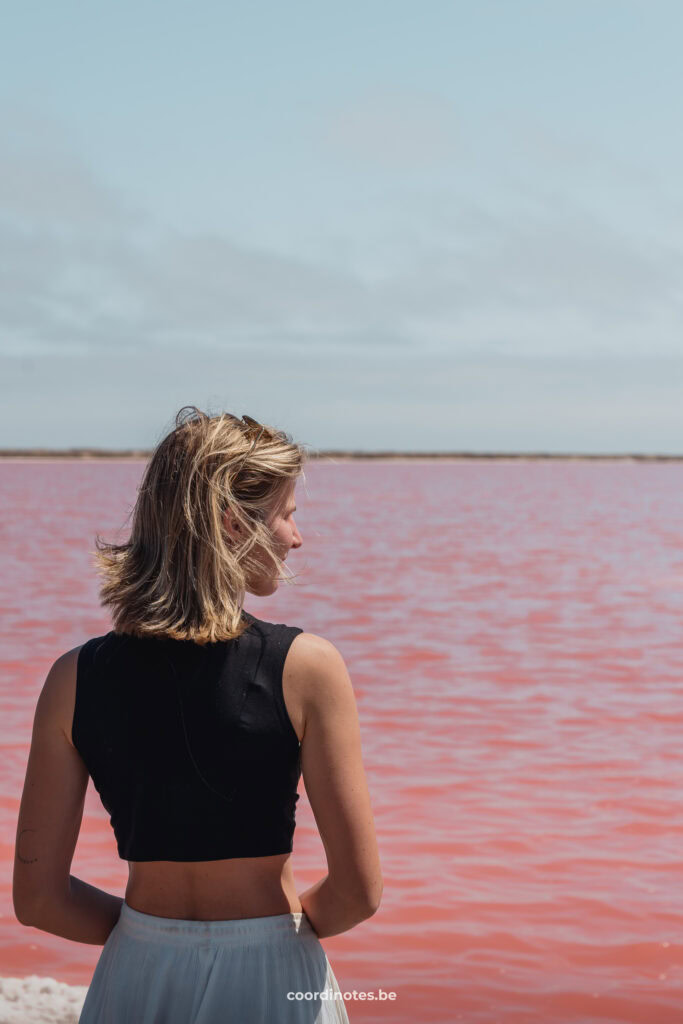
An hour’s drive from Swakopmund, you can visit the largest seal colony in the world in Cape Cross. Closer to Swakopmund, you can go sandboarding, quad biking, sand biking or kayaking among the seals. If you are not very active, you can also just enjoy something to eat or drink next to the beach. So as you can see, there are plenty of interesting things to do near Swakopmund.
This is also the place where you will find more civilization again and where you can go to a larger supermarket to stock up on food for the coming days.
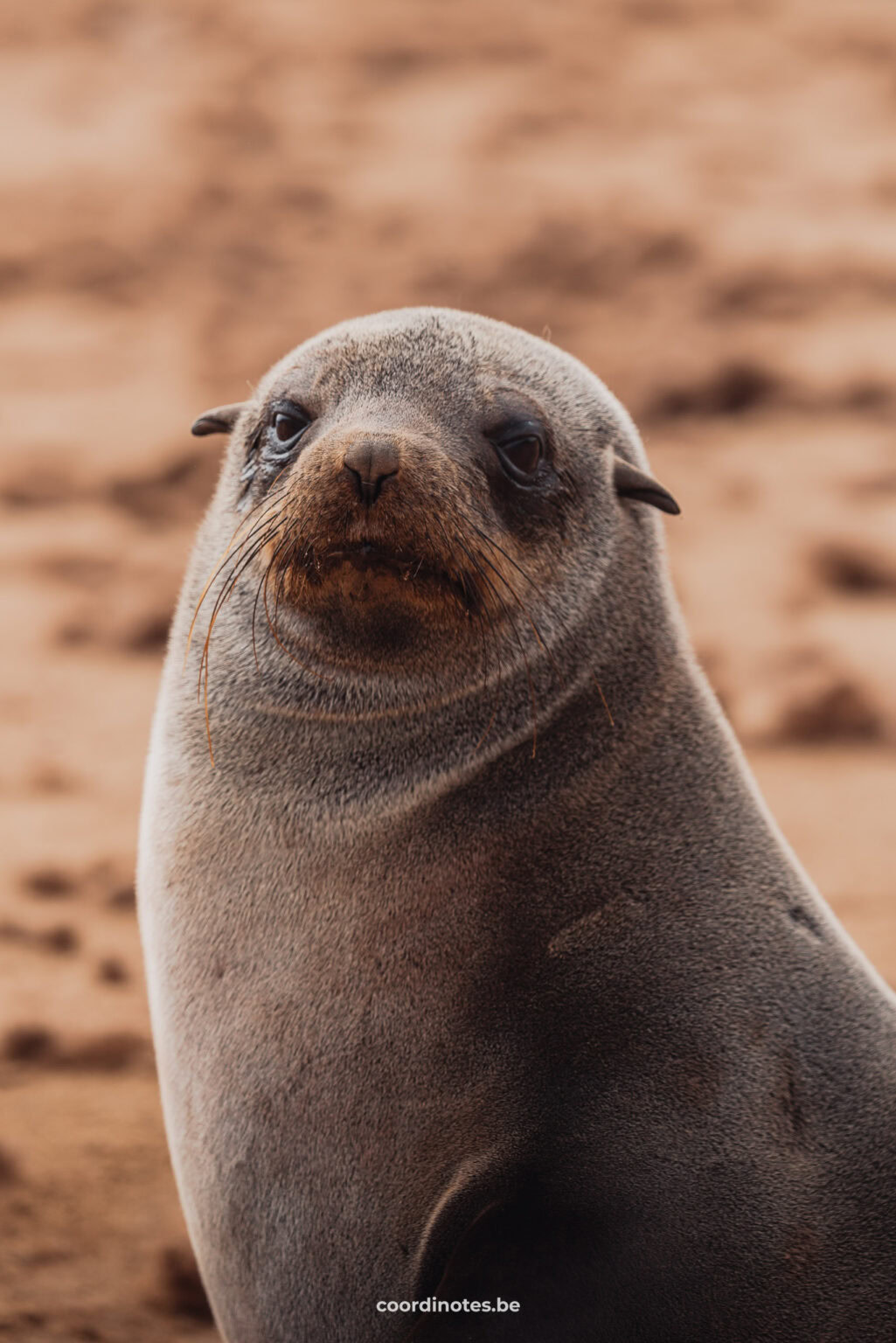
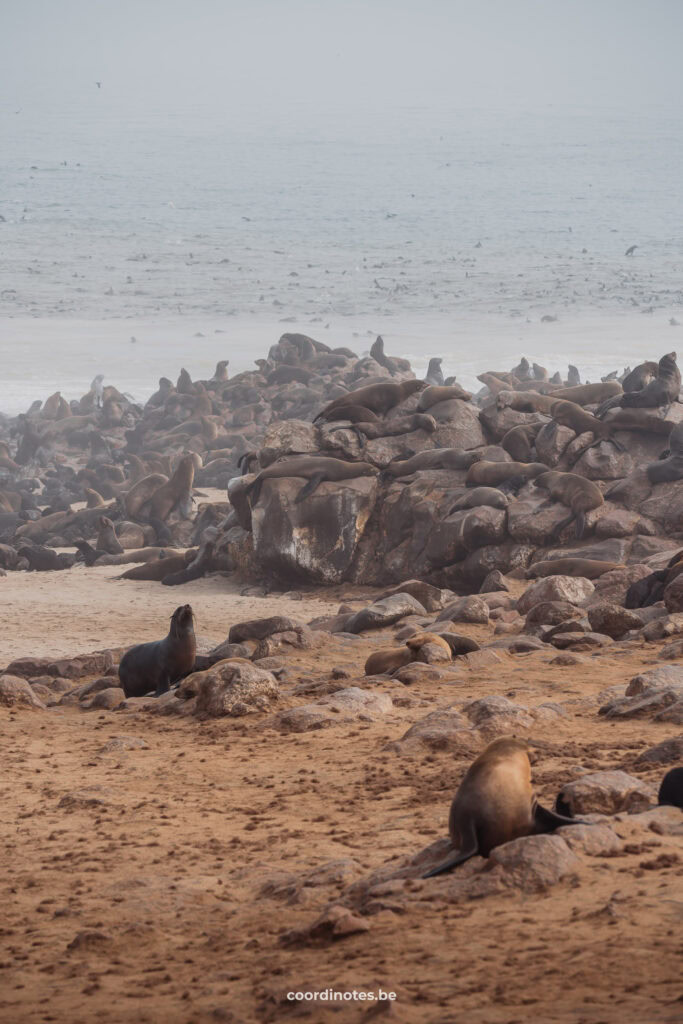
Tours
Discover the region in a unique way through our partner Viator.
Spitzkoppe
Spitzkoppe is another unique place in Namibia with again a different landscape than you have seen in recent days. Large granite rocks and boulders protrude from the surrounding plains. This 700 meters tall peak is over 700 million years old and is sometimes referred to as the Matterhorn of Namibia. It is an incredible place with some unique rock formations and fascinating caves, ideal for hikers, photographers and climbers. Due to its remote location, it is also the place to be for stargazing. It’s possible to visit Spitzkoppe on a day trip, but if you are traveling with a roof tent, we recommend that you stay here at least 1 night. In our opinion, it was one of the most beautiful and tranquil campsites in Namibia.
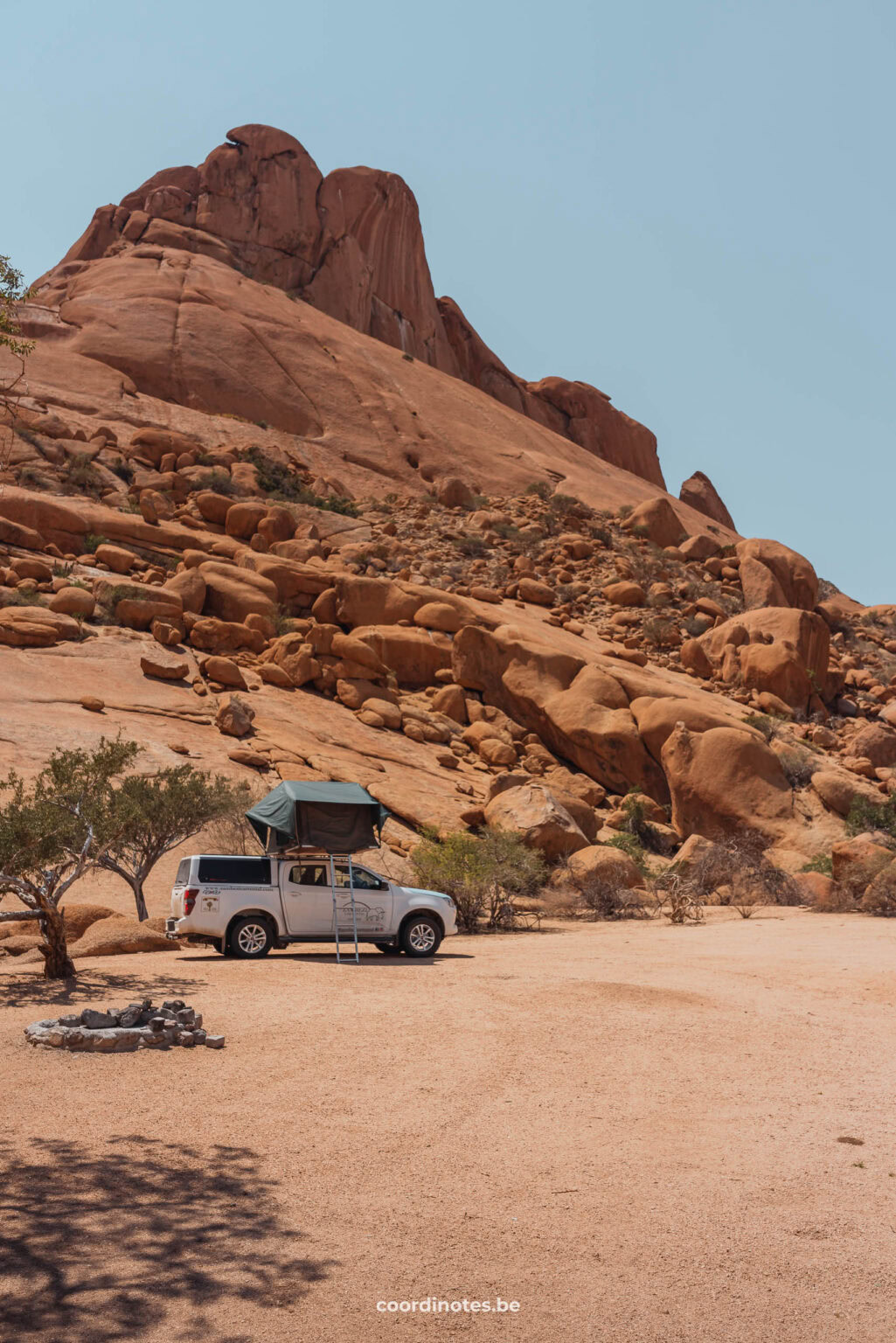
Recommended campsite:
Spitzkoppe campsite (Low season: 210 NAD pp/night)
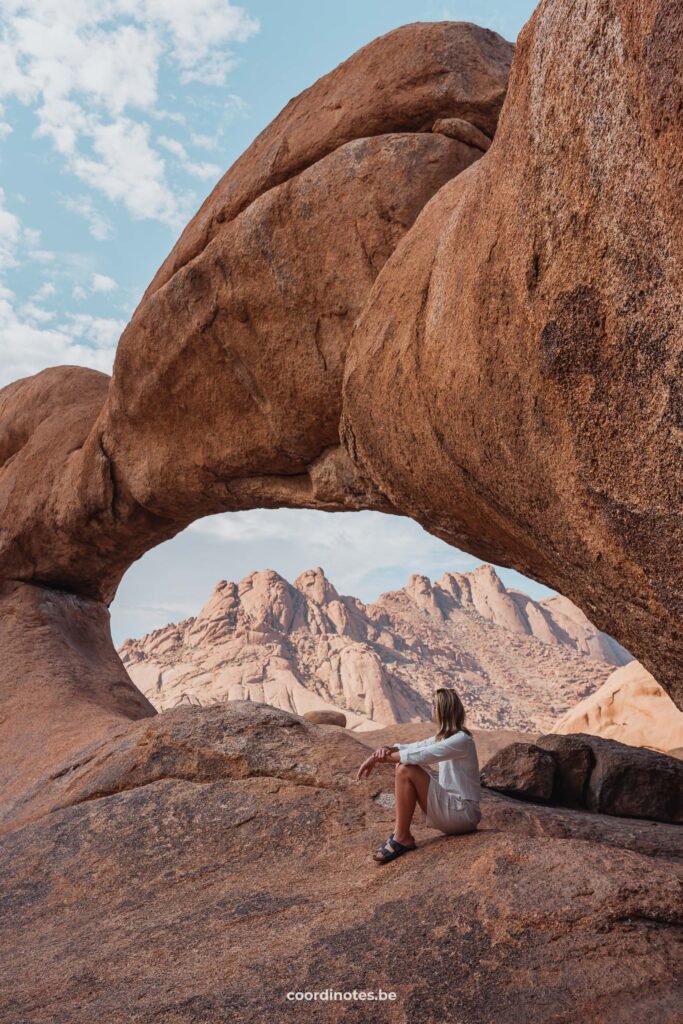
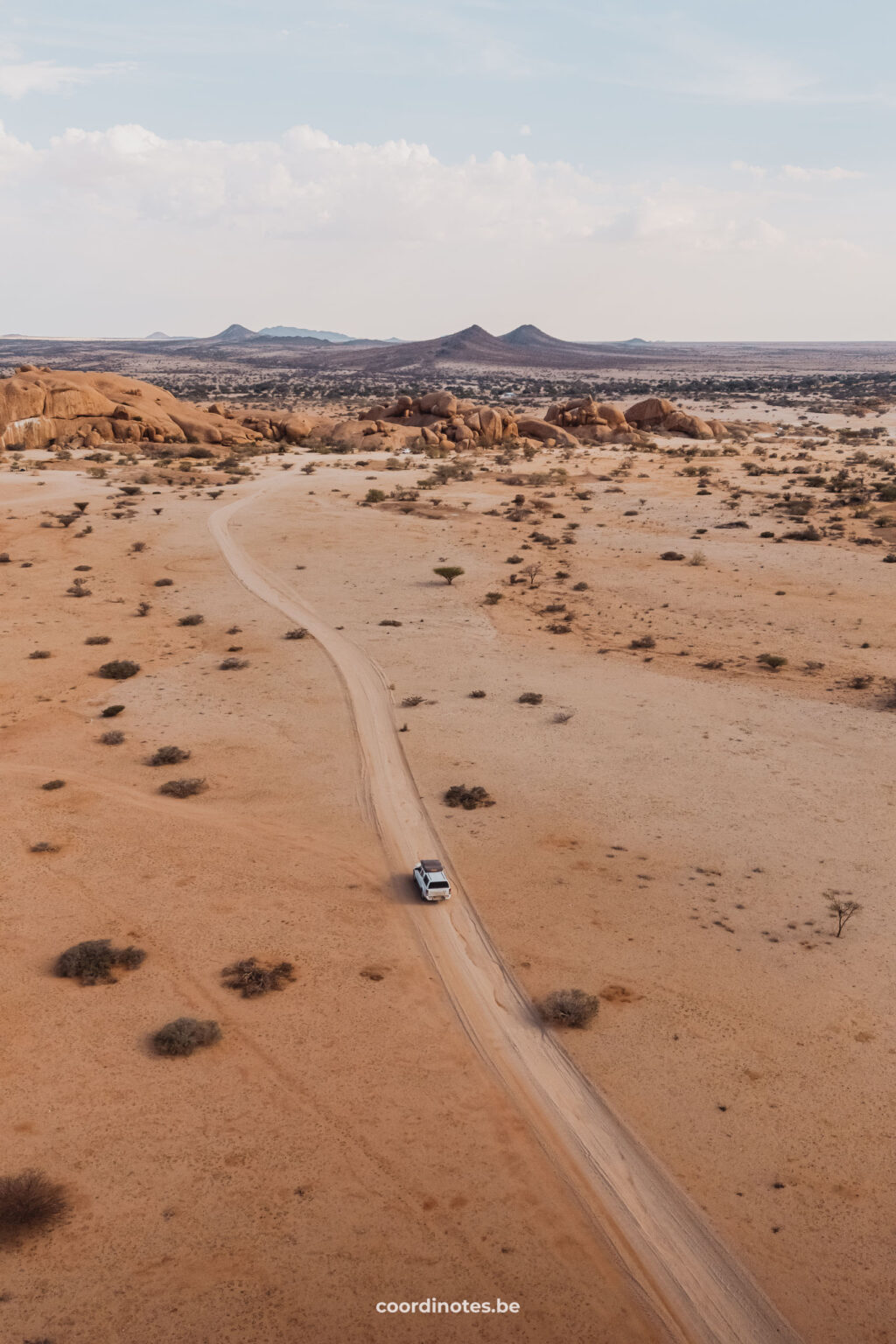

Advertising
2 – 3 week alternative: The next part of the route depends on how much time you have.
If you are short in time, we advice you to drive straight from Spitzkoppe to Etosha National Park.
If you have one or more spare days, you can make a detour along the fascinating rock carvings in Twyfelfontein and the impressive Grootberg Pass.
Must Read
Twyfelfontein and Grootberg
Twyfelfontein is a UNESCO Heritage Site, where you can see the largest concentration of rock engravings in Southern Africa. It is a super fascinating place with over 2000 rock engravings. A guide will take you along the Lions Man Trail and tell you more about the history and the engravings. There is no shelter at Twyfelfontein, so visit as early as possible to beat the heat and crowds.
From Twyfelfontein, you can drive to Grootberg along the Grootberg Pass. This is a mountain pass at an height of 1.550m above sea level. You drive through the beautiful Grootberg Mountains, through, surprise, a completely different landscape than you have already seen on this Namibia itinerary.
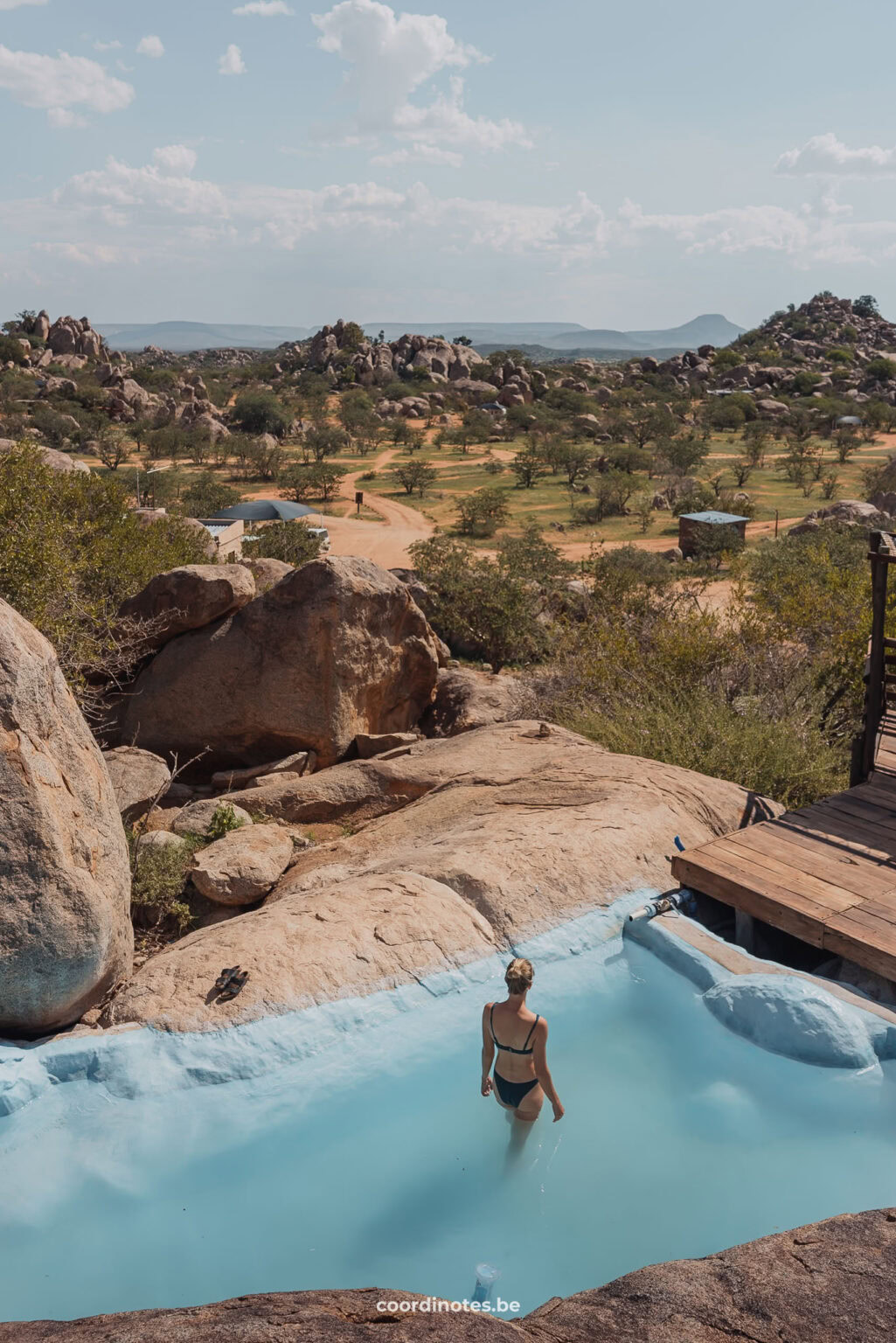
Recommended Campsite:
Hoada Campsite (Low season: 271 NAD pp/night)

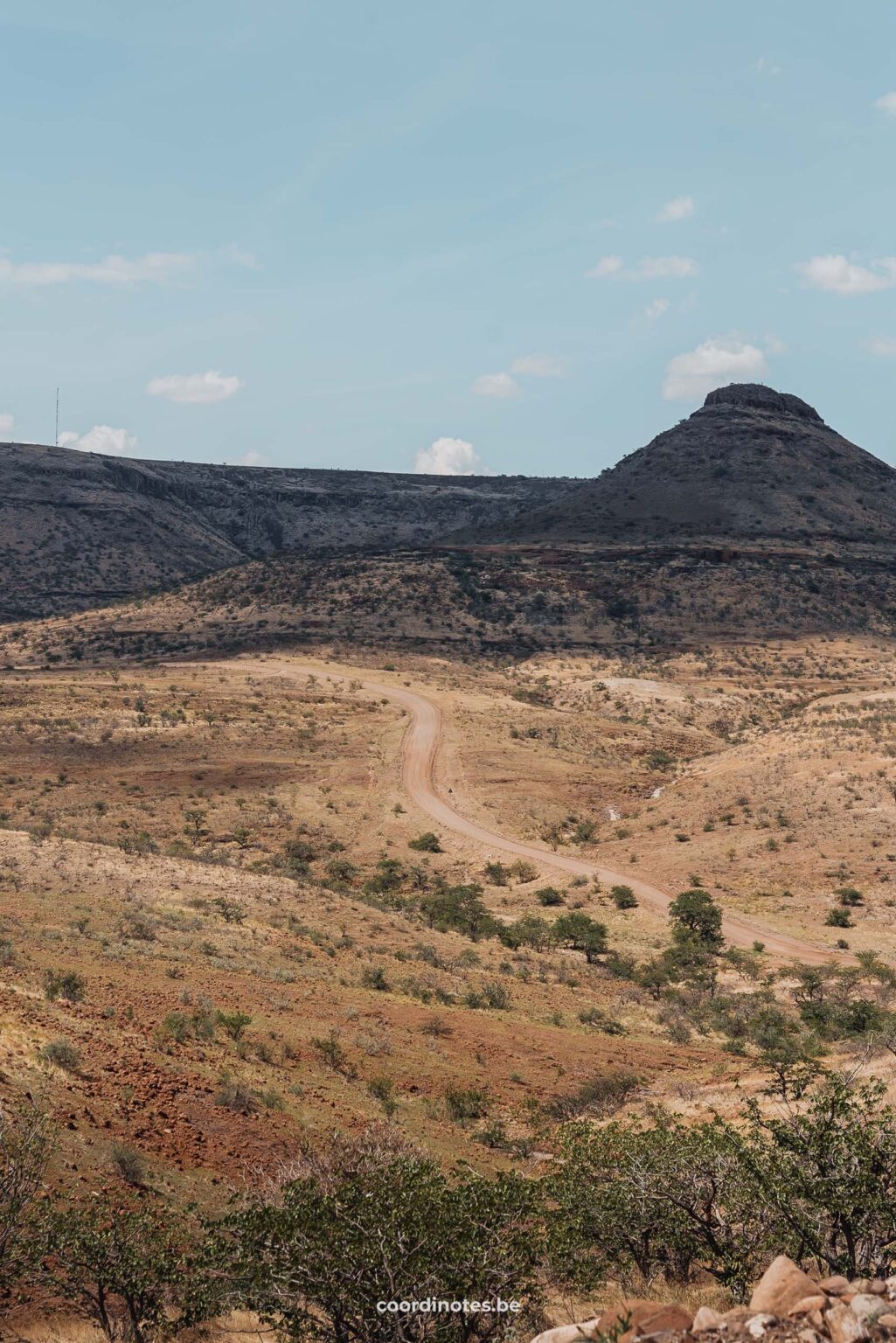
Advertising
Etosha National Park
It’s time to head to another highlight of this Namibia itinerary: the famous Etosha National Park. Along the way, you can stop at Omapaha Etosha Himba Village, where you can take a tour to learn more about the culture of the Himba people and their village.
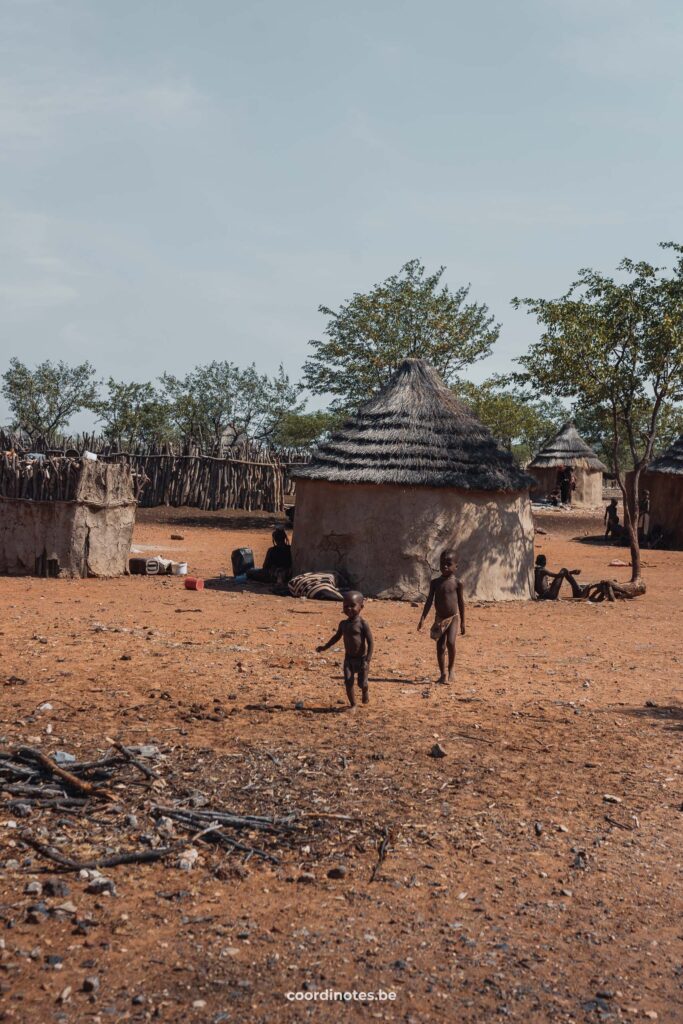
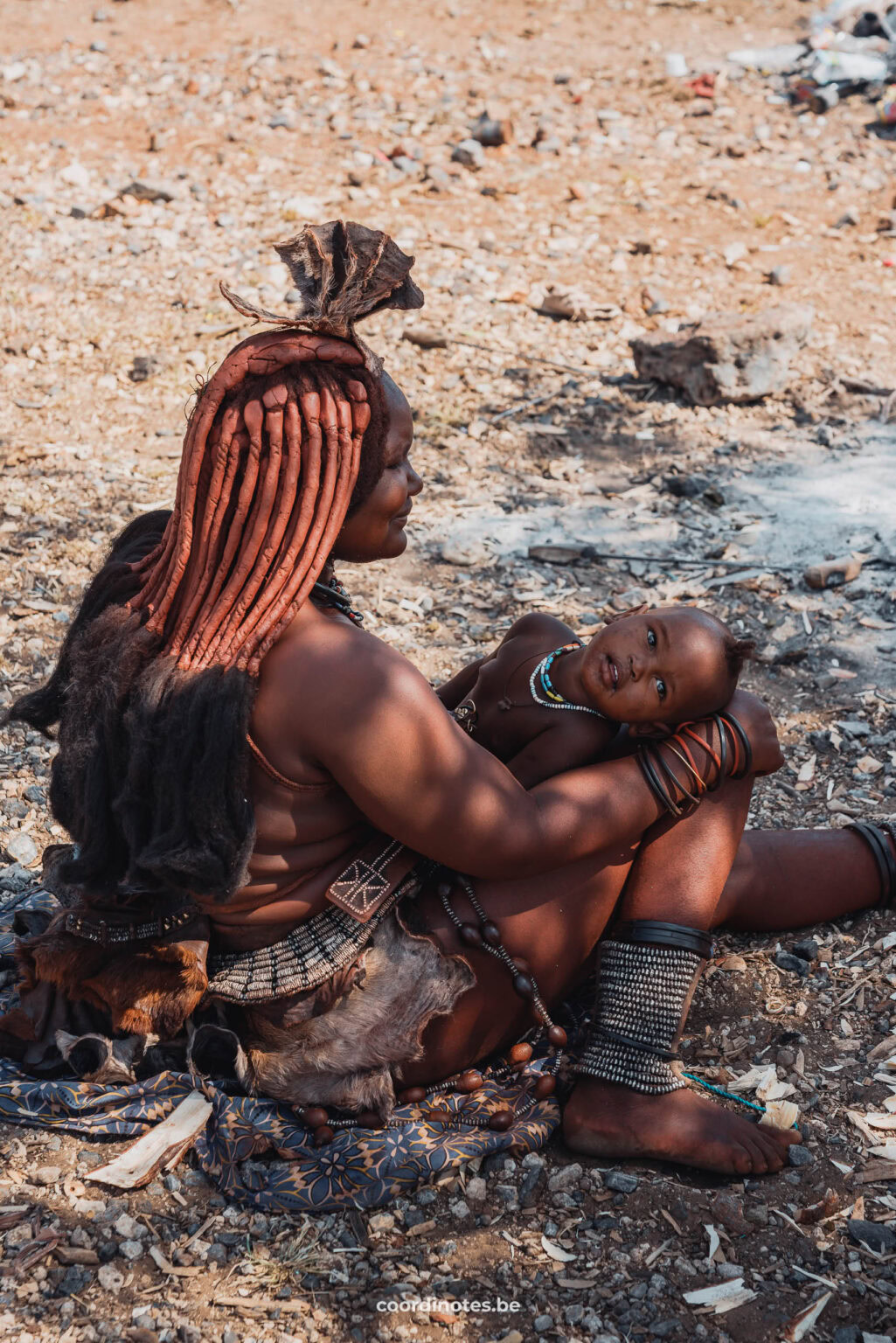
Then, you drive into Etosha National Park, our favorite place in Namibia. It is one of the largest national parks in Africa and we are sure you will spot some incredible wildlife here. There are several campsites within the park where you can stay. The unique thing about Etosha is that each camp has a water hole, where you can spot animals 24/7, even when the gates are closed in the evening. So be sure to stay a few nights inside the park!
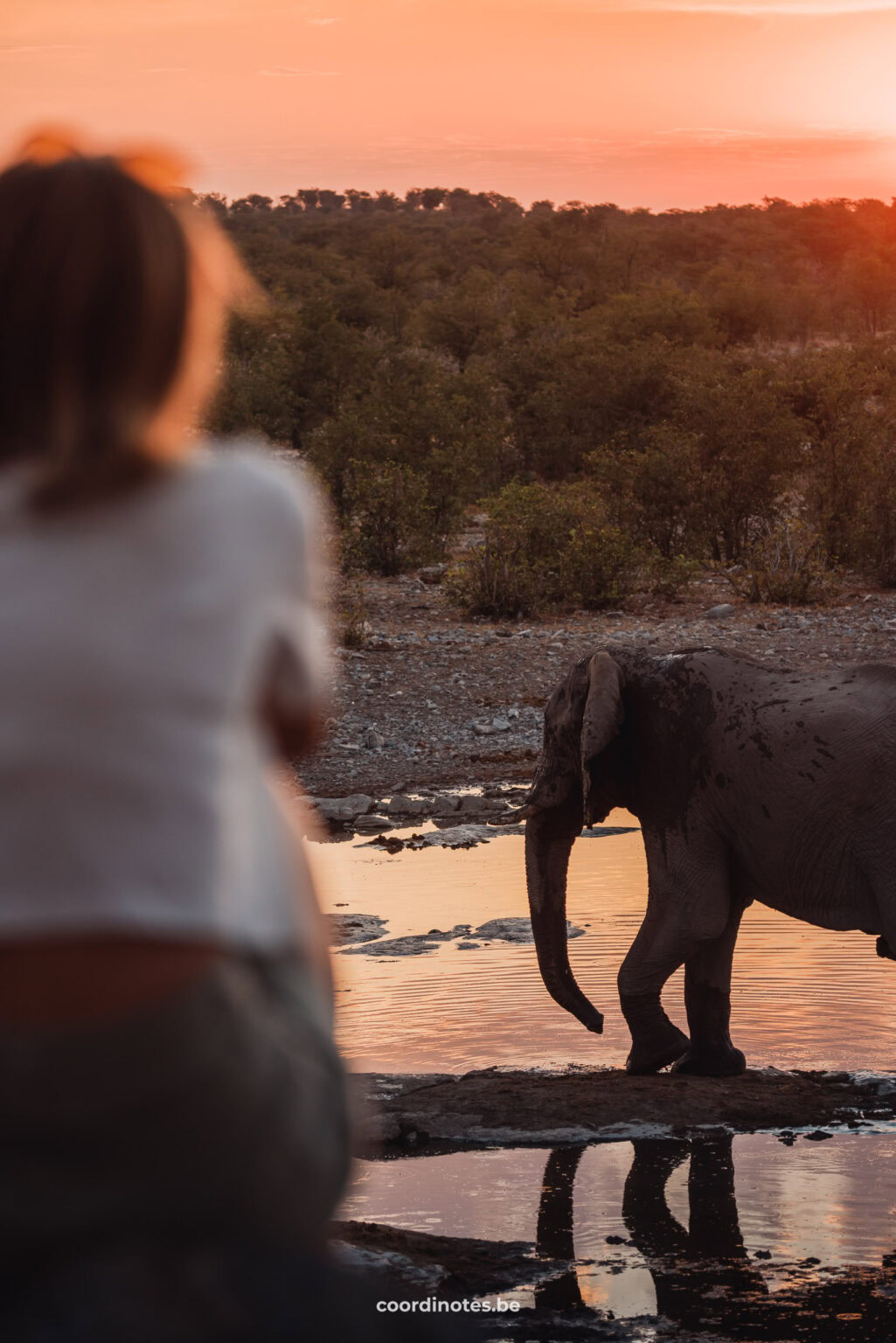
Recommended camps in Etosha:
Halali and Okaukuejo have the most scenic waterholes. (Low season: 336 NAD for 2/night + park fees).
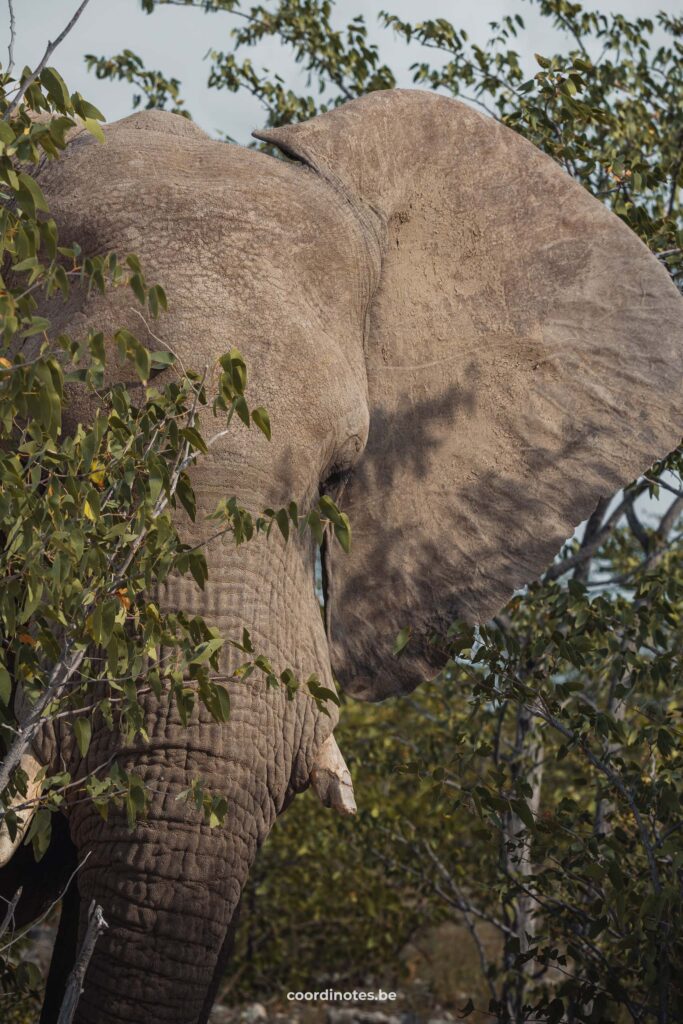
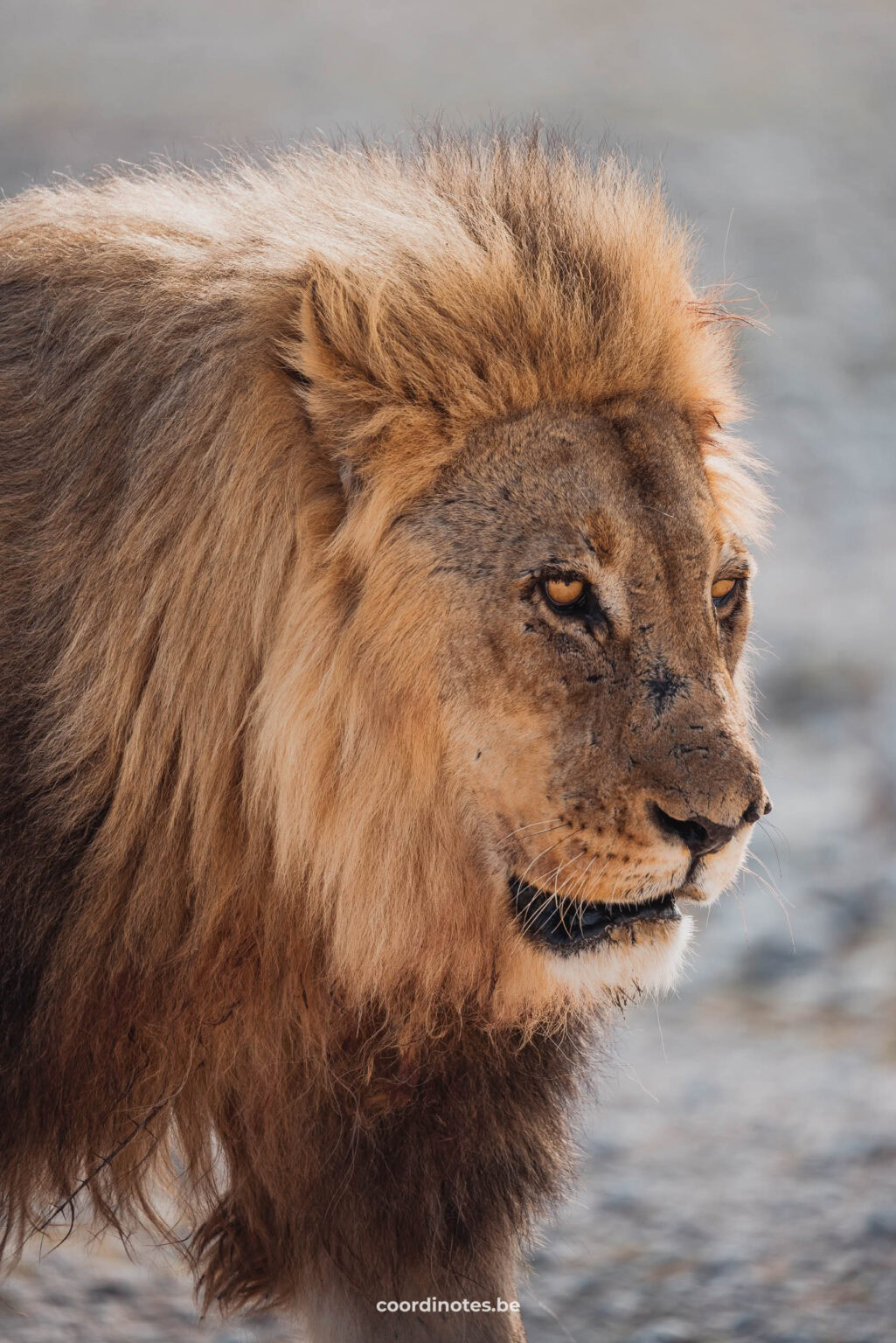
Flight deals
Fly to your destination at the best prices! Our partners offer many airlines on their platform so you can compare what is the best option for you.
Waterberg National Park
If you haven’t seen any Cheetahs in Etosha, you can make a stop at the Cheetah Conservation Fund on your way to Waterberg National Park. It is an international organization dedicated to saving cheetahs in the wild. You can join a tour through the center and attend the feeding of the cheetahs, that can not be released in the wild anymore. Or you can go on a cheetah drive through the park and look for the cheetahs that are being prepared to release back into the wild. We thought it was definitely worth a visit and we are sure that this center was started for the cheetahs and not for tourism!

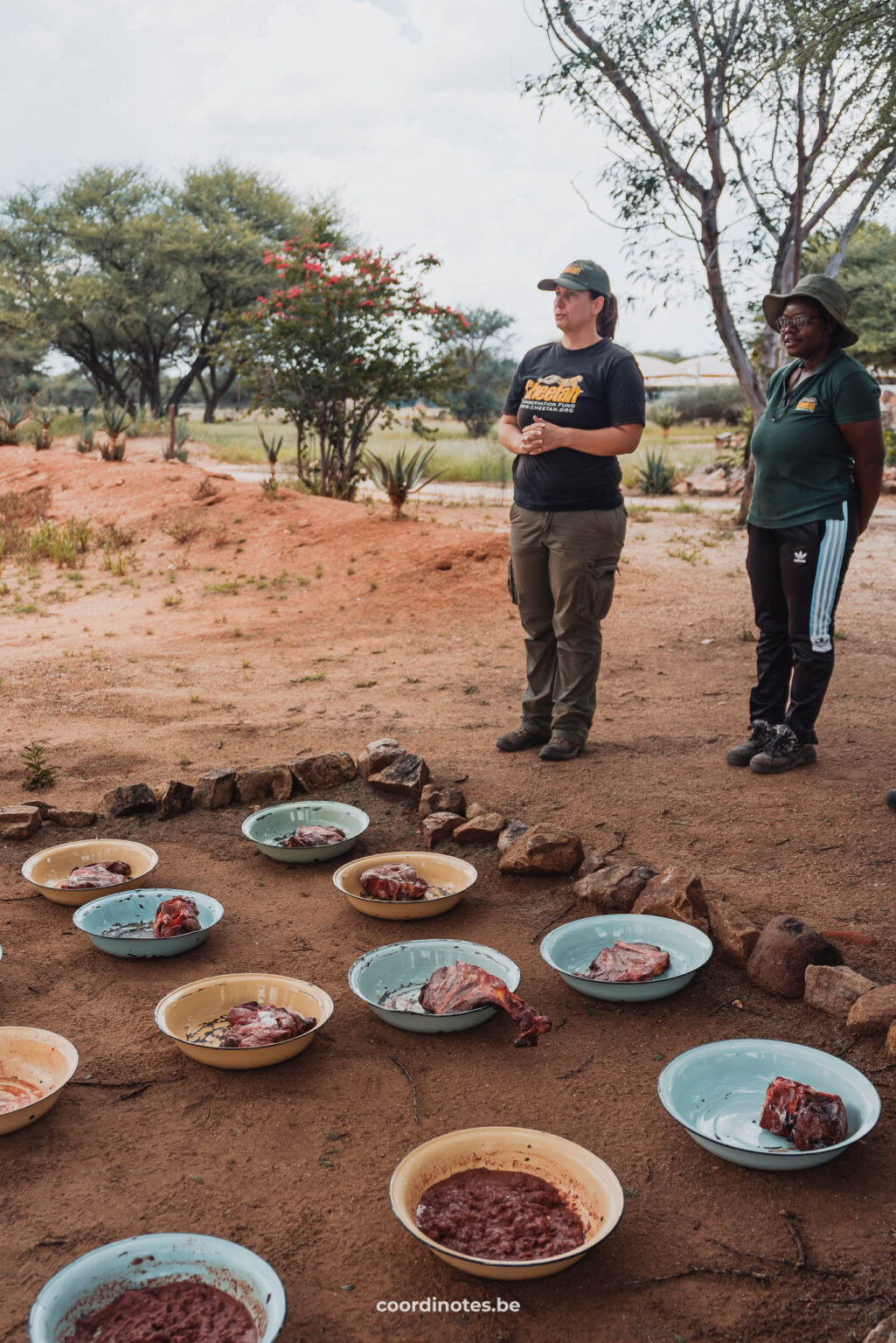
In Waterberg National Park, you find the beautiful Waterberg plateau and table mountain. It is a unique place that is home to some rare wildlife, in order to safe them. In this park, you can go on various guided and unguided hikes, enjoy beautiful views and look for rhinos with a guide.
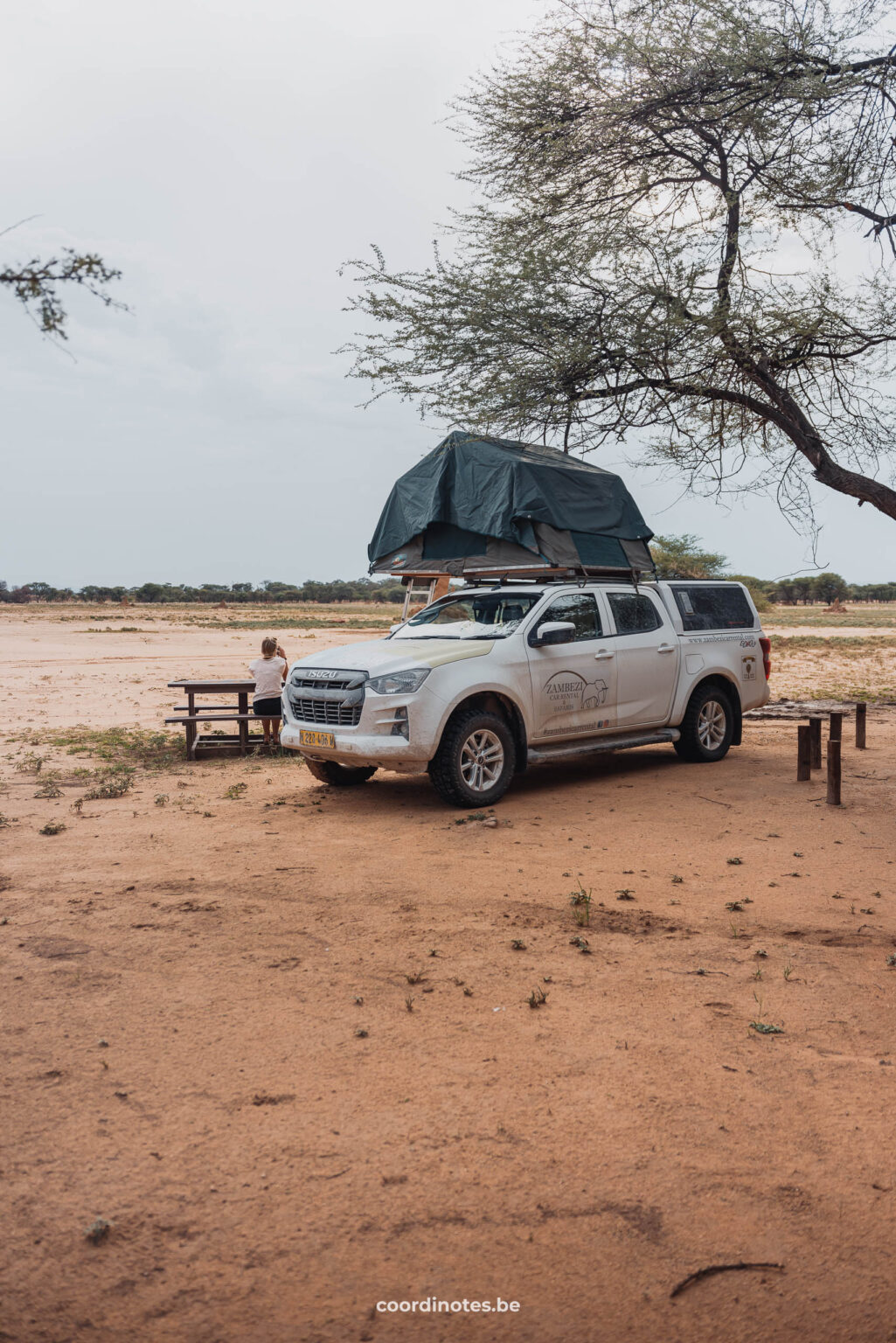
Recommended campsites:
Waterberg Plateau Campsite (Low season: 400 NAD pp/night)
Hamakari Campsite (Low season: 300 NAD pp/night)
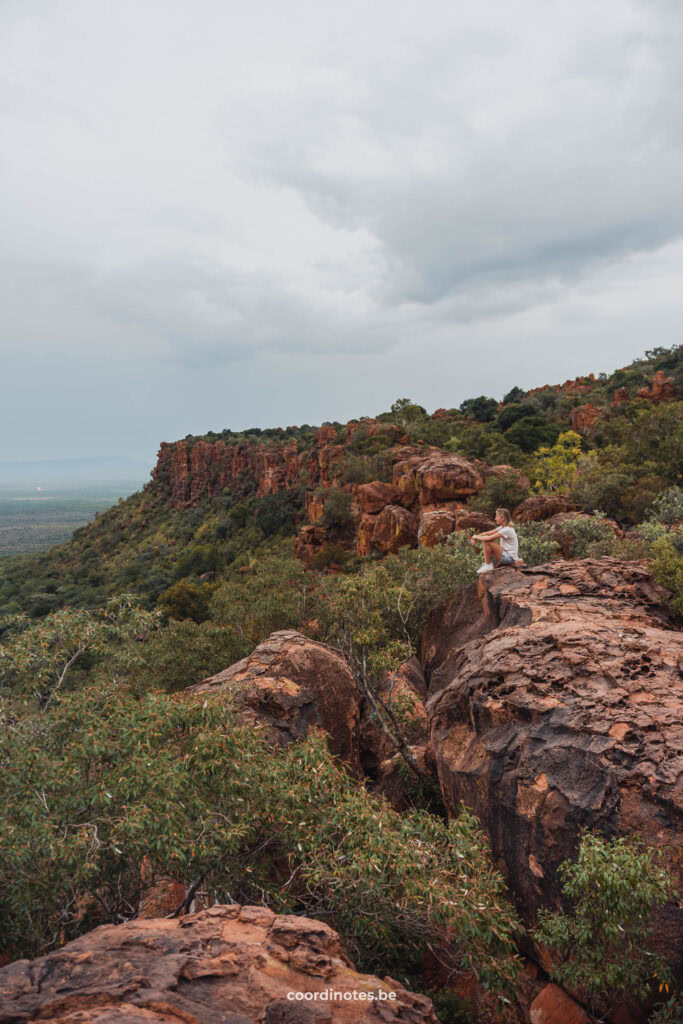
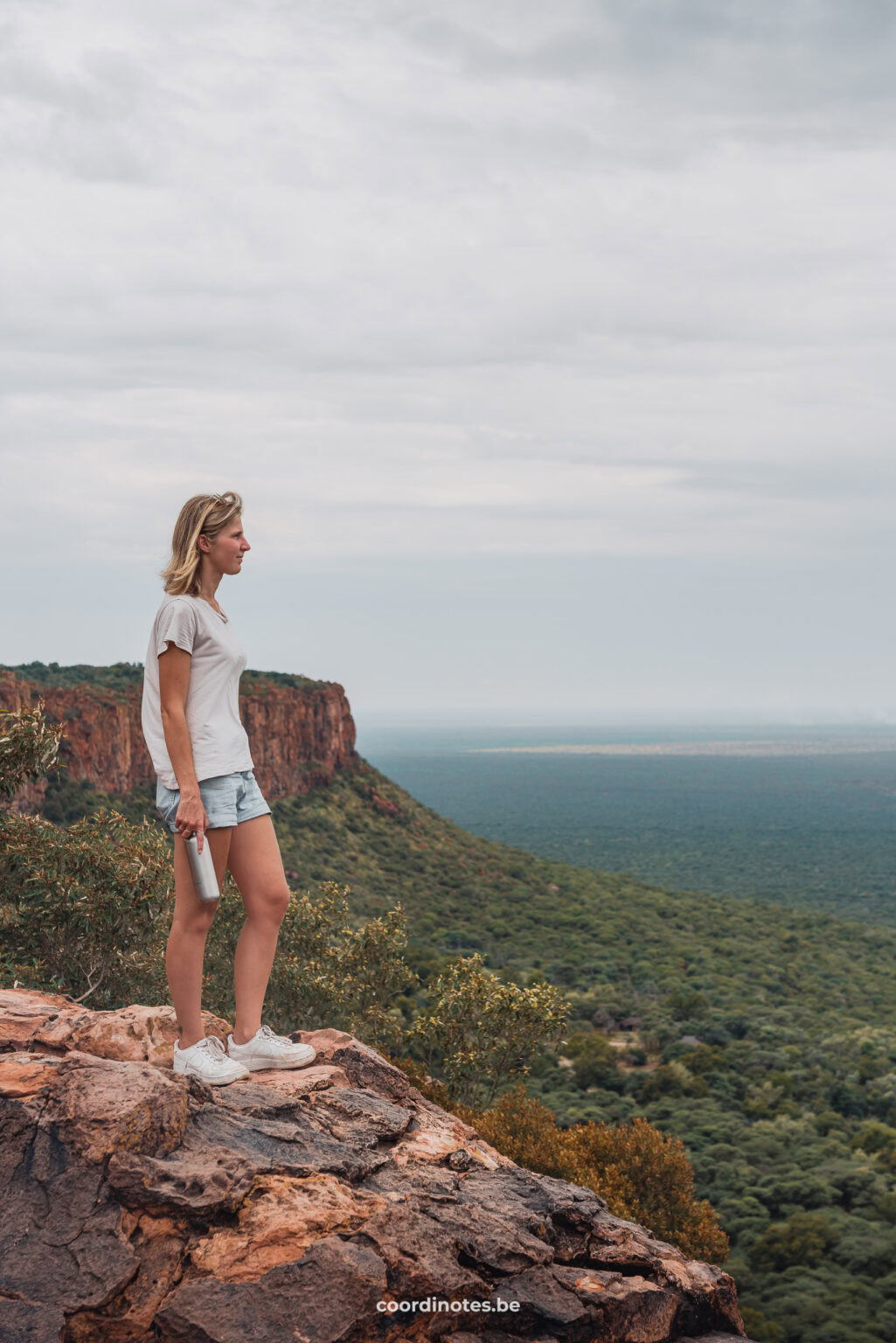
Alternative: Okonjima Nature Reserve.
If you are not yet done spotting wildlife after Etosha, Okonjima Nature Reserve is a popular alternative to Waterberg. It’s a nature reserve that is home to the AfriCat Foundation, a non-profit organization for the long-term conservation of Namibia’s large carnivores and other endangered species. If you want to visit this place, you will also have to stay here for a night. You will have to book this well in advance, because it fills up quickly.
If you still have some spare time, you can visit both Waterberg and Okonjima Nature Reserve.
Advertising
Windhoek
This Namibia road trip itinerary ends again in Windhoek. You will most likely have to return your rental car here. You can still explore the city a bit, visit the famous Christuskirche, have dinner at the famous Joe’s Beer house or taste a delicious wine at the Stellenbosch Wine Bar and Bistro.

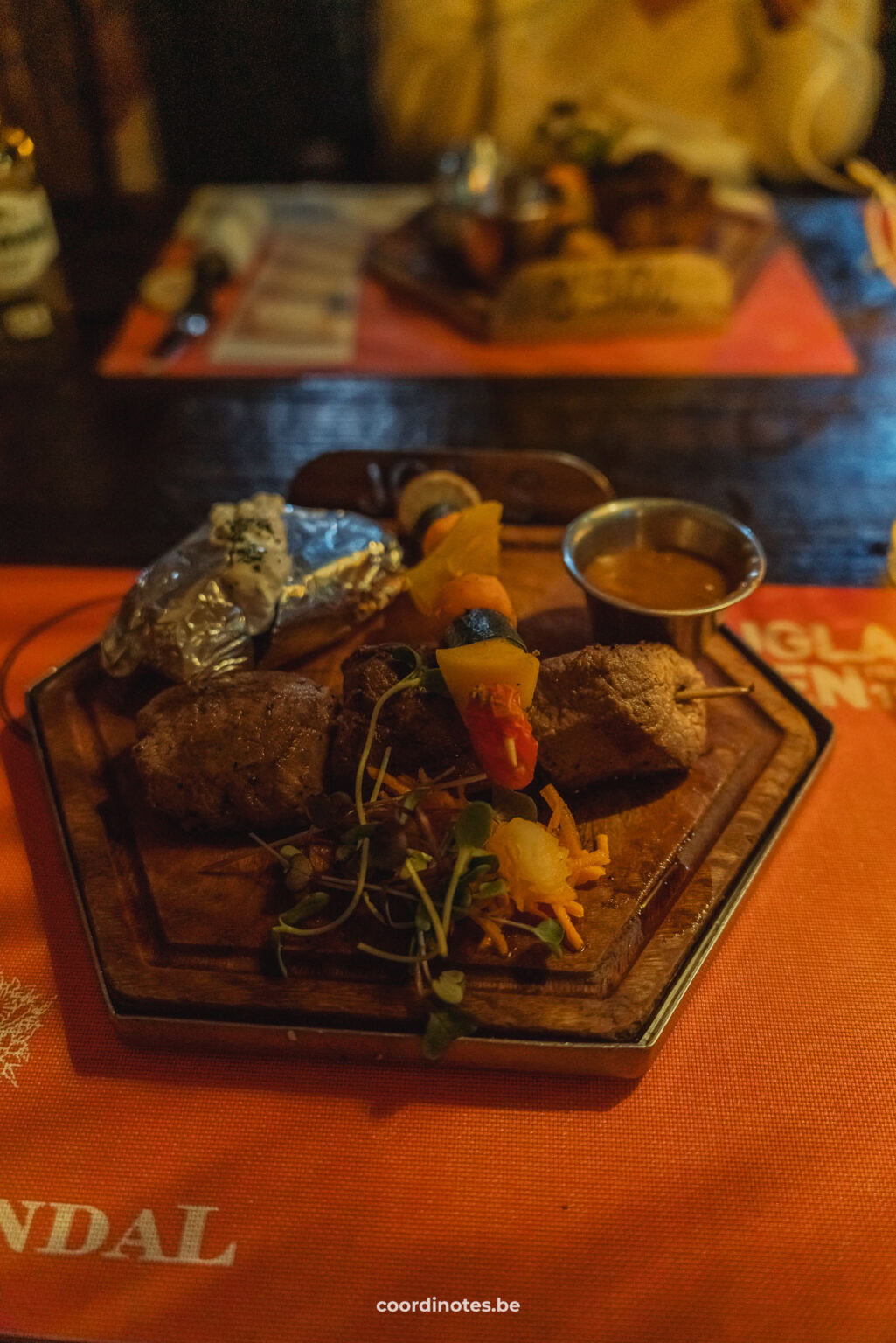
Win-Win for everyone
Did you know that, if you buy or book something through our links, we receive a small commission?
However, you still pay the same and therefore have no extra costs! So a win-win for everyone. This way, we can continue to add even more travel inspiration and tips to this blog for your next adventure. Thanks a lot!
Thank you for visiting our blog
We hope you find our free travel guides and tips useful. If you want, you can support us virtually by ‘buying us a coffee‘.
Every contribution, no matter how small, is greatly appreciated and will help us continue to share our passion with you and grow this blog.
